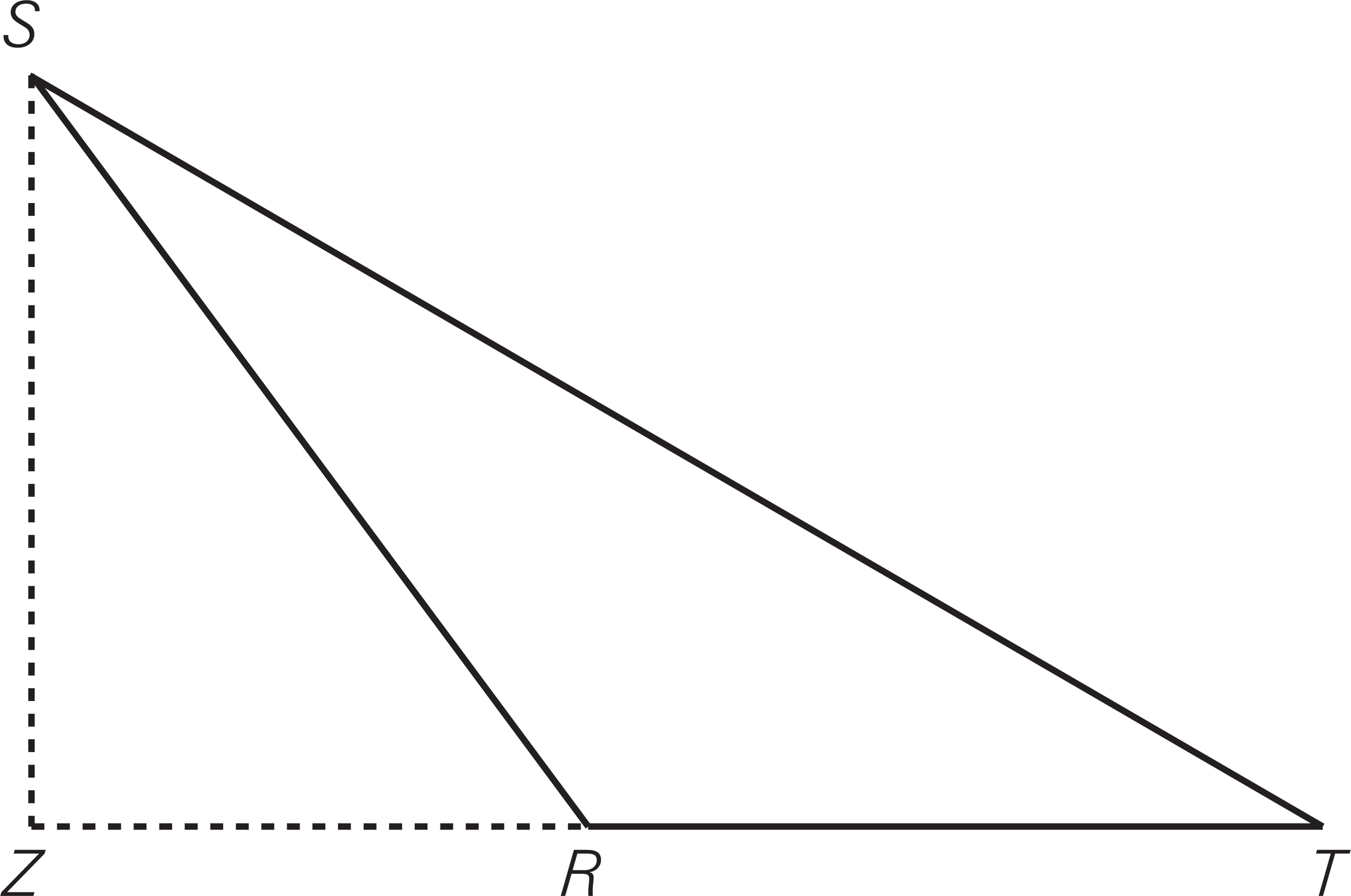1. BCE
Statement (1) gives a value for y but no information on the value of x. Since the problem asks for a value of x, Statement (1) is insufficient.
2. BCE
Statement (1) states that 2y is an integer. Consider what values of y are possible. y could be an integer, such as 2, but it could also be a fraction, such as  . Statement (1) is insufficient.
. Statement (1) is insufficient.
3. AD
The question states that there are 12 children in the room. Statement (1) provides the number of girls, so both the number of boys and the difference between the number of boys and the number of girls can be determined. Since the difference can be determined, Statement (1) is sufficient.
4. AD
Statement (1) can be rewritten as the equation  , which can be used to solve for x. If the value of x is known, then the question can be answered. Statement (1) is sufficient.
, which can be used to solve for x. If the value of x is known, then the question can be answered. Statement (1) is sufficient.
1. 77
74 + (27 – 24) = 74 + 3 = 77
2. 79
(8 × 9) + 7 = 72 + 7 = 79
3. 10
2(9 – (8 ÷ 2)) = 2(9 – 4), which simplifies to 2(5) = 10.
4. 16
2(7 – 3) + (–4)(5 – 7) = 2(4) + (–4)(–2), which simplifies to 8 + 8 = 16.
5. B
4(–3(3 – 5) + 10 – 17) = 4(–3(–2) + 10 – 17), which simplifies to 4(6 + 10 – 17) = 4(–1), or –4.
6. A
Statement (1) states that x3 = 8. If x3 = 8, then x equals 2. Since there is only one possible value of x that satisfies the equation, Statement (1) is sufficient. Write down AD. Statement (2) states that x2 = 4. In this case, x could be 2 or –2. Statement (2) is therefore insufficient. The correct answer is (A).
1. x 2 + x = x (x + 1)
2. (55 × 12) + (55 × 88) = 55(12 + 88), which simplifies to 55(100) = 5,500.
3. a(b + c – d ) = ab + ac – ad
4. abc + xyc = c (ab + xy)
5. B
If x = 6, then  , which simplifies to
, which simplifies to 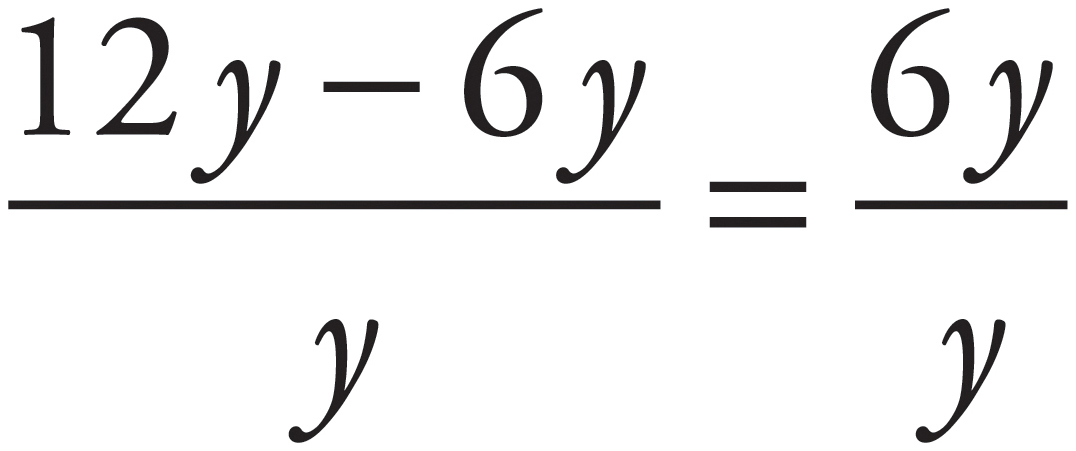 , and reduces to 6.
, and reduces to 6.
6. B
Statement (1) provides a value for x, but provides no information about y and z, so Statement (1) is insufficient. Write down BCE. Statement (2) provides a value for a. Factor the equation given to yield a(x + y + z) = 15. If a = 5, then x + y + z = 3, and Statement (2) is sufficient. The correct answer is (B).
1. 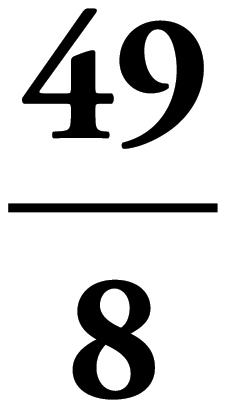 or
or 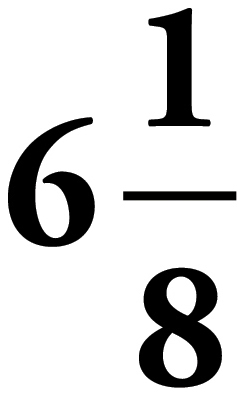
 , which may be rewritten as
, which may be rewritten as  .
.
2. 
 , which reduces to
, which reduces to  .
.
3. 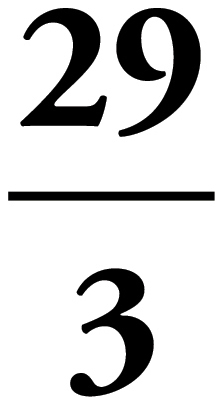
 , which yields
, which yields 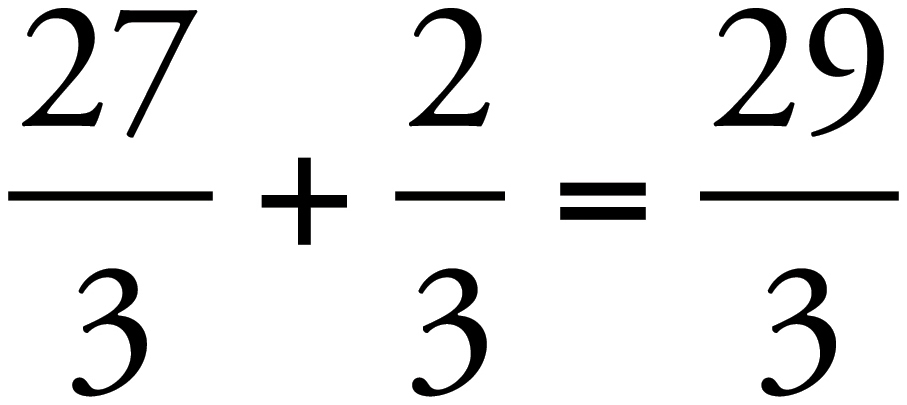
4. 18
Cross-multiply to get 2x = 36. Divide both sides of the equation by 2 to get x = 18.
5. C
 , which yields
, which yields 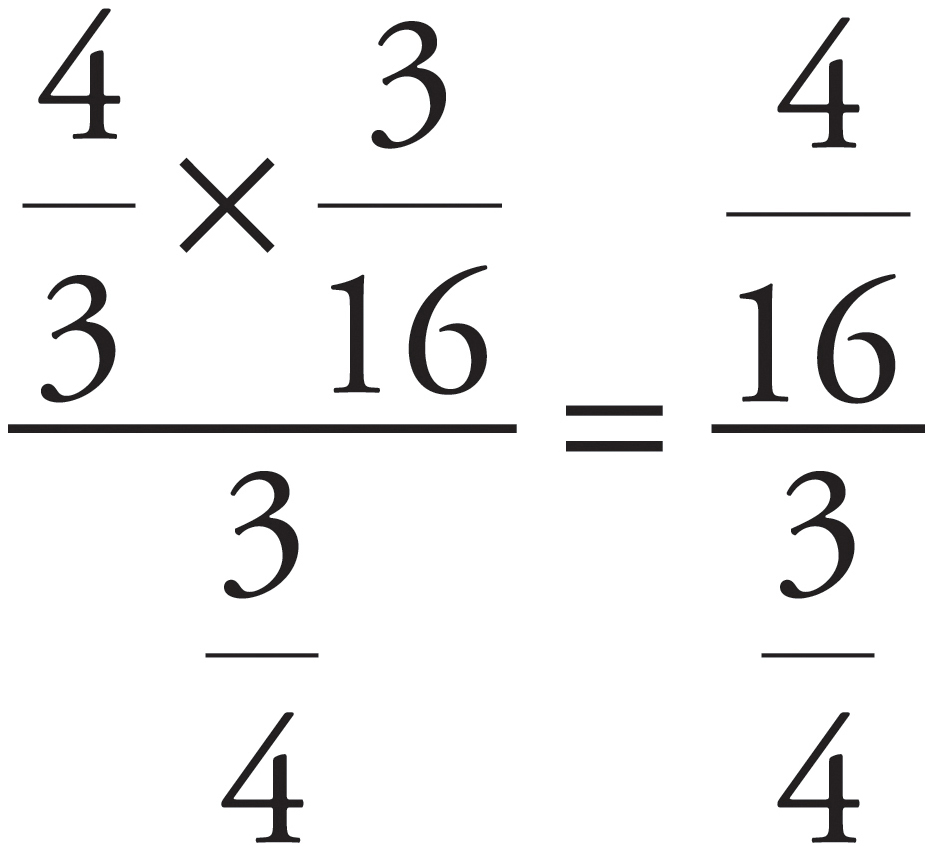 , which further yields
, which further yields 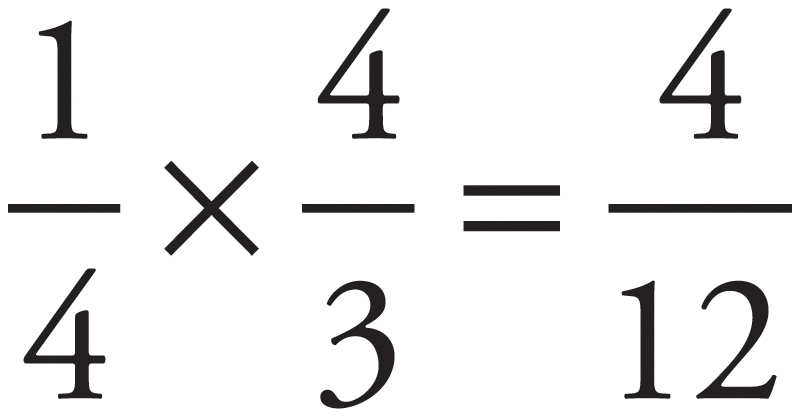 , or
, or  .
.
1. 33.30
Since the numbers are lined up, just subtract down, remembering to borrow when dealing with the tenths digit.
2. 266.175
Multiply 273 by 975 as normal and then move the decimal point over 3 spots.
3. 6.125
Set up to do long division: 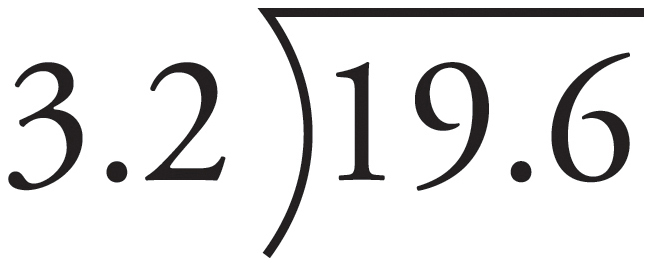 . Move the decimal point over one to the right to get
. Move the decimal point over one to the right to get 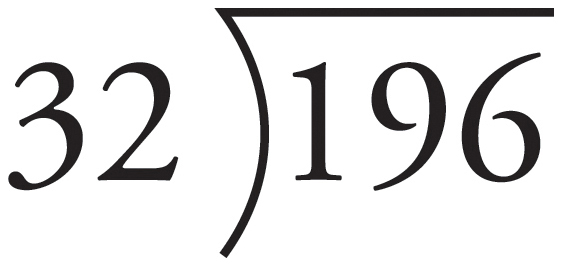 . 32 goes into 196 6 times, so
. 32 goes into 196 6 times, so  . Next, multiply 6 by 32 to get 192 and subtract 192 from 196 to get 4. Then add a decimal point and a 0, bring that 0 down, and see that 32 goes into 40 one time, so multiply 1 by 32 and then subtract 32 from 40 to get 6.1. Add another 0, bring it down, and see that 32 goes into 80 two times, so multiply 32 by 2 to get 64 and then subtract that from 80. Finally, add one more 0 an see that 32 goes into 160 exactly 5 times:
. Next, multiply 6 by 32 to get 192 and subtract 192 from 196 to get 4. Then add a decimal point and a 0, bring that 0 down, and see that 32 goes into 40 one time, so multiply 1 by 32 and then subtract 32 from 40 to get 6.1. Add another 0, bring it down, and see that 32 goes into 80 two times, so multiply 32 by 2 to get 64 and then subtract that from 80. Finally, add one more 0 an see that 32 goes into 160 exactly 5 times:

The correct answer is 6.125.
4. 800
 , which may be rewritten as
, which may be rewritten as 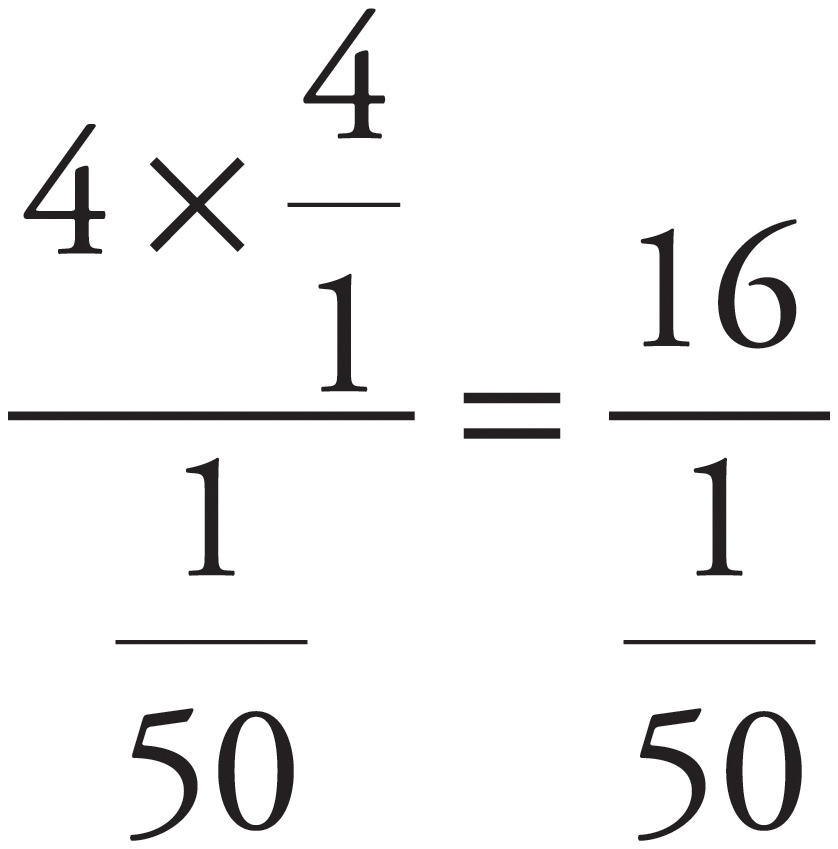 , and yields
, and yields 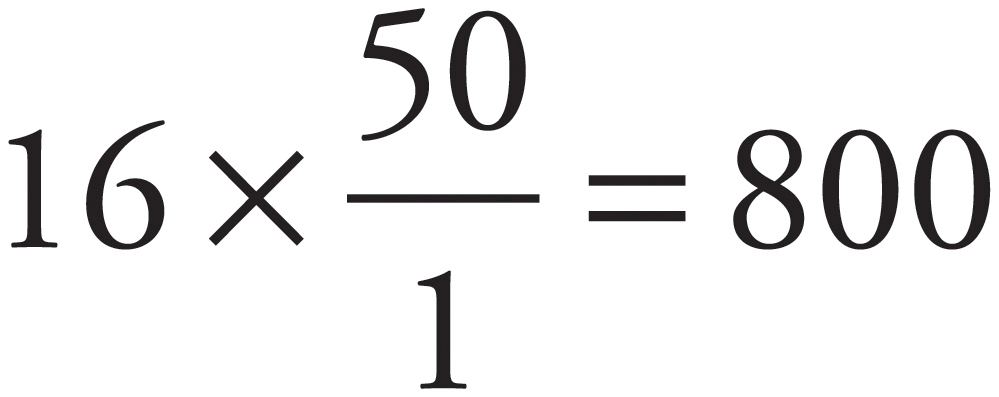 .
.
5. C
 , which yields
, which yields  , which reduces to
, which reduces to 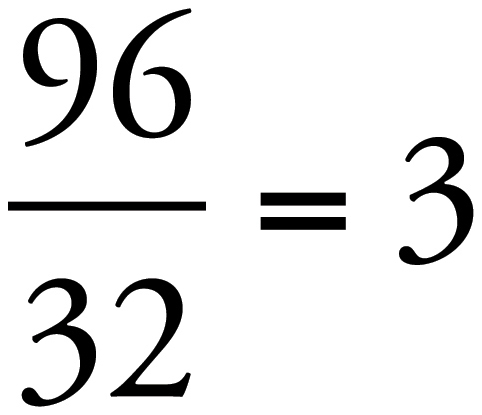 .
.
6. D
The question states that x and y are reciprocals, which means that determining the value of either variable provides the value of the other. Therefore, Statement (1) provides the values of both x and y, which allows the question to be answered. Write down AD. Statement (2) also provides the values of both y and x, so the correct answer is (D).
1. C
The question involves ratios, so set up a Ratio Box. Since there are 2 ratios given, set up 2 Ratio Boxes—the current situation and the hypothetical if the students drop out.
Current:
After drop outs:
Since the algebra seems somewhat complicated, Plug In the Answers. Start with (C). The answers represent the number of men currently in the class. Plugging 18 in gives
Current
The problem then states that 2 men and 1 woman drop out, so subtract 2 from the total men and 1 from the total women and check if that fits a 8 to 7 ratio in the After drop outs box:
After drop outs:
16 to 14 is an 8 to 7 ratio. Since the condition is met, the correct answer is (C).
2. B
If the average of 5 numbers is 7, then the numbers must add up to 35. If three of those numbers average 5, then those 3 numbers must add up to 15. The sum of the two numbers left is therefore 35 – 15 = 20. If the sum of the two numbers is 20, then the average of those two numbers is 10. The correct answer is (B).
3. D
 may be factored to yield
may be factored to yield 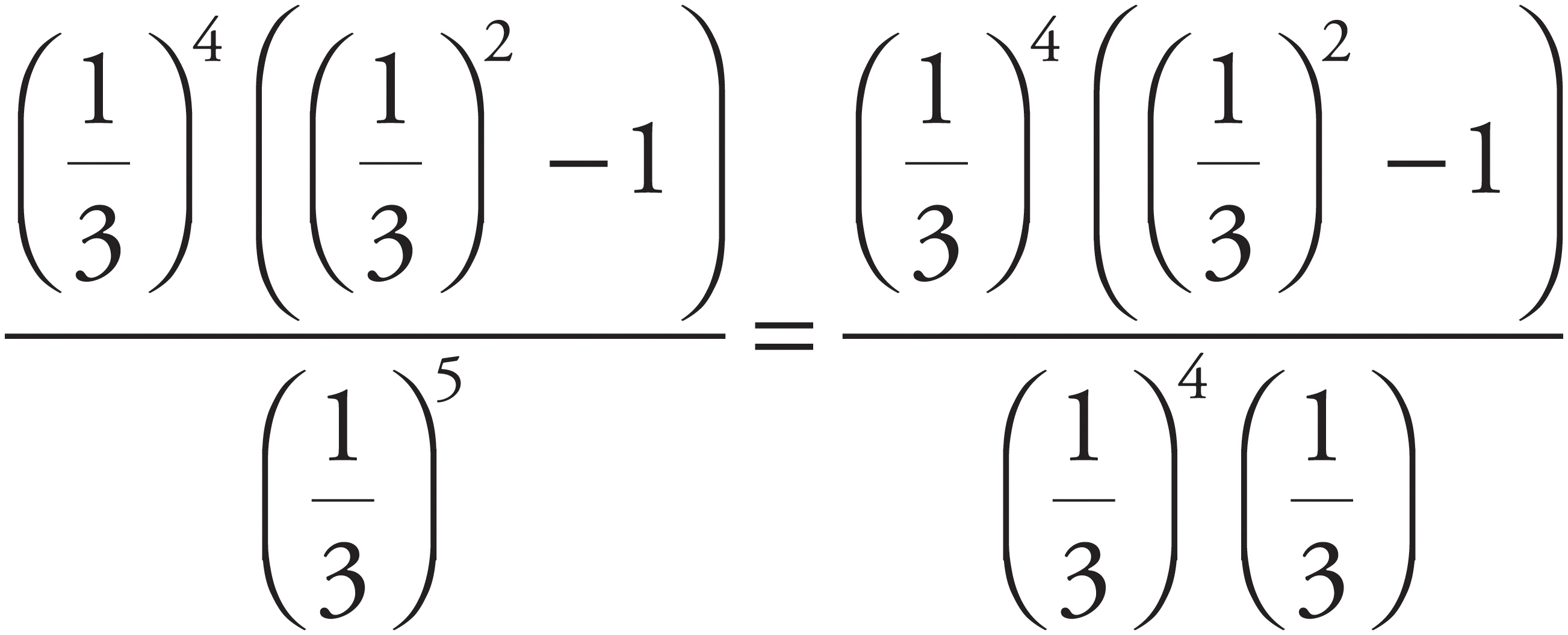 , which reduces to
, which reduces to 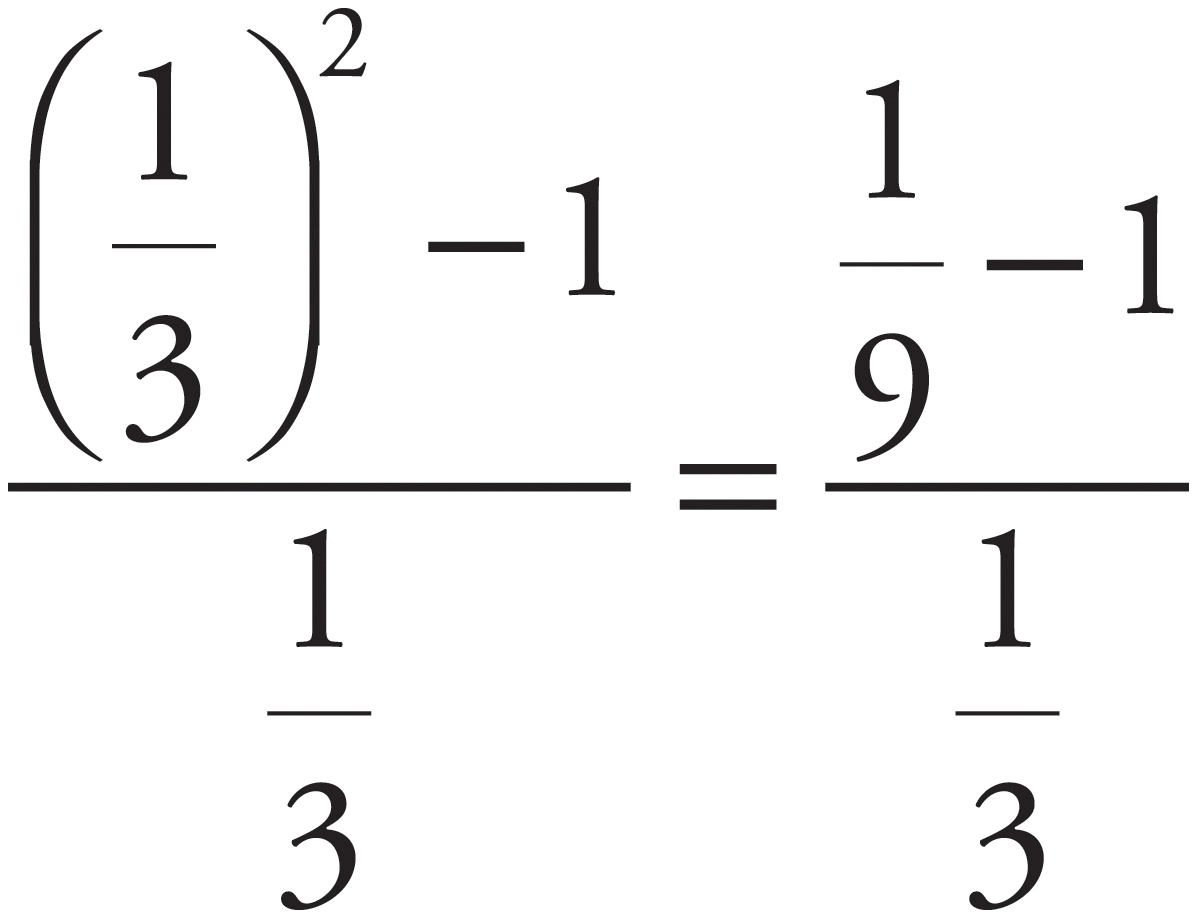 , which yields
, which yields 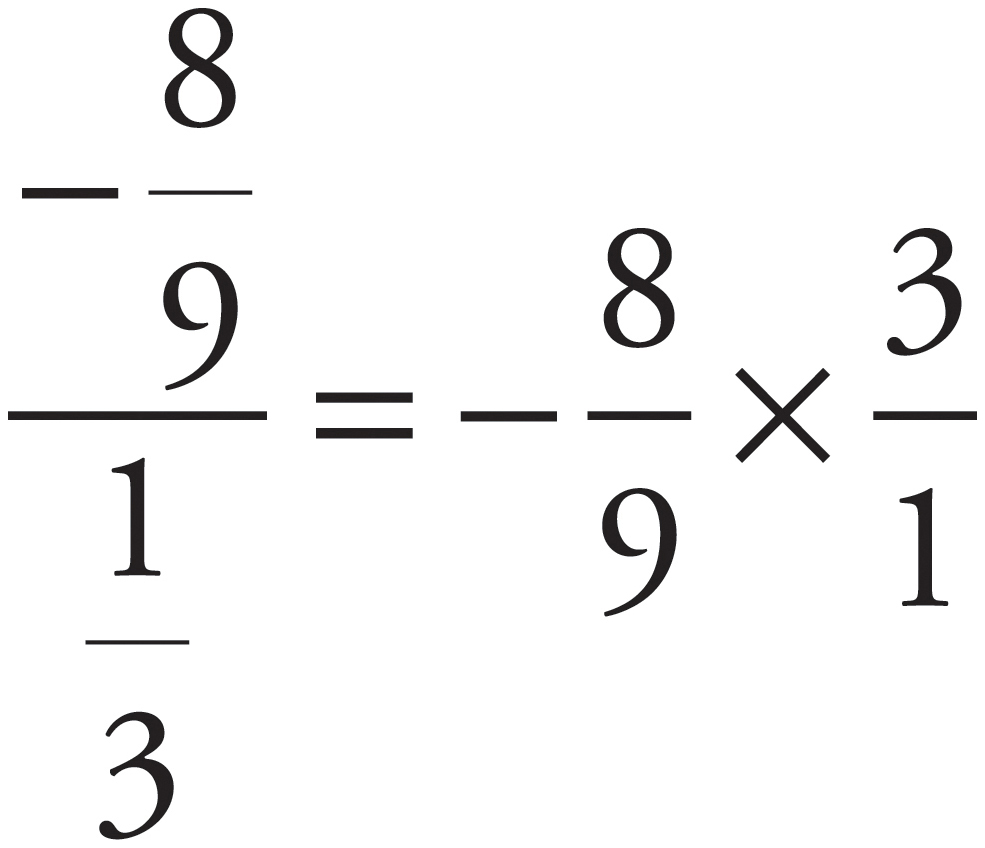 , which results in
, which results in 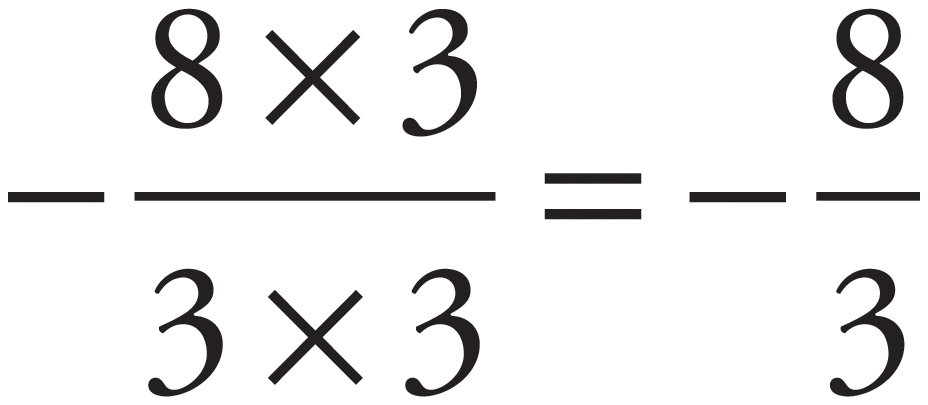 .
.
4. D
Factor 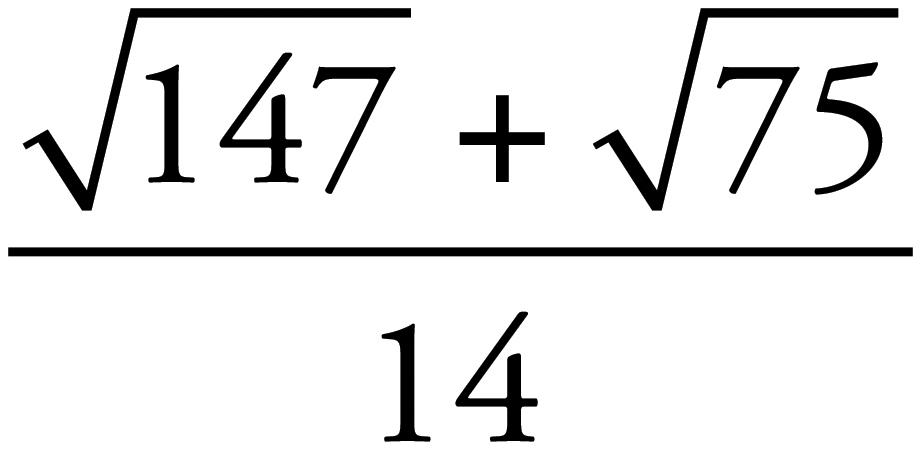 as
as  , which simplifies to
, which simplifies to 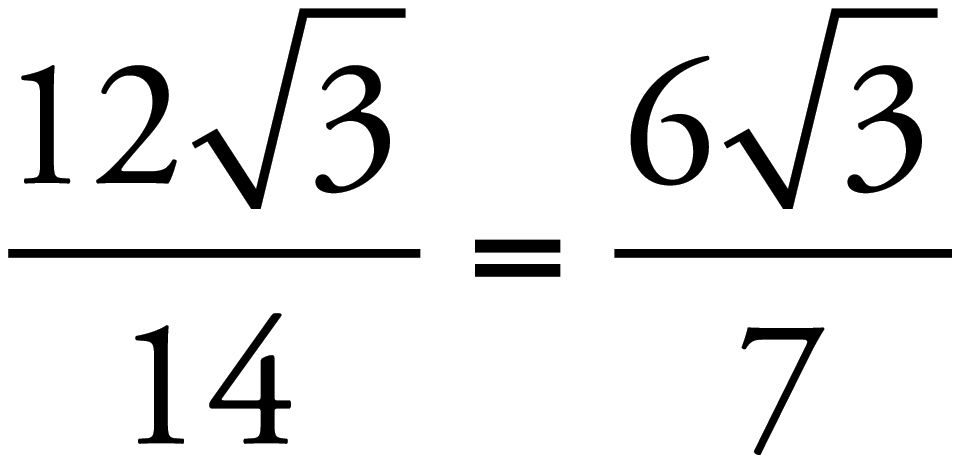 . The second expression simplifies to
. The second expression simplifies to 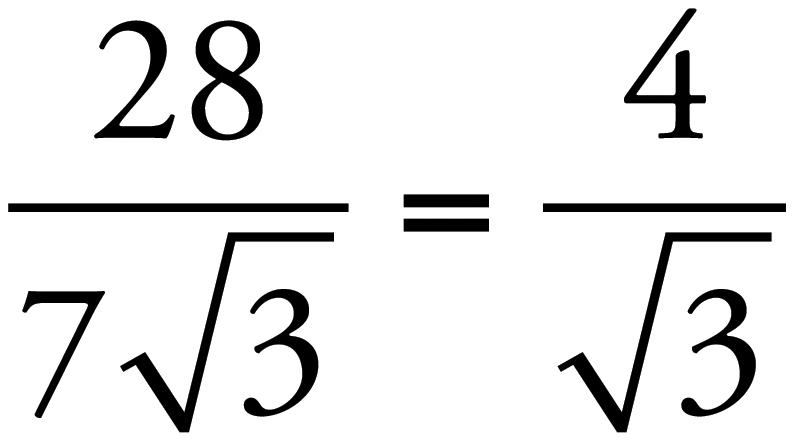 . In order to evaluate the ratio between the expressions, express them as the fraction
. In order to evaluate the ratio between the expressions, express them as the fraction  , which yields
, which yields  , and reduces to
, and reduces to 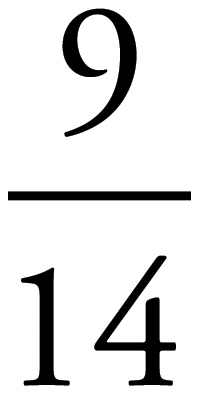 , or a 9 to 14 ratio.
, or a 9 to 14 ratio.
5. B
Determine the two amounts of interest. $5,000 earning 8% interest, compounded semi-annually, earns 4% interest compounded every 6 months. 4% of 5,000 is  . 4% of the new $5,200 balance is
. 4% of the new $5,200 balance is  , and the account contains $5,408 at the end of one year. For the other account, 8% of 5,000 is
, and the account contains $5,408 at the end of one year. For the other account, 8% of 5,000 is  , so the account contains $5,400 at the end of one year. The difference is $5,408 – $5,400 = $8. The correct answer is (B).
, so the account contains $5,400 at the end of one year. The difference is $5,408 – $5,400 = $8. The correct answer is (B).
6. E
If the average of ten numbers is 10, then the numbers have to add up to 100. However, the numbers could be anything. For example, if all ten numbers are 10, then the standard deviation is 0. However, since standard deviation is defined as the spread of numbers away from the average, the standard deviation could be anything—as the numbers could be negative numbers, really big numbers, and so on—as long as the sum is 100. So, 0, 10, and 20 could all be standard deviations. The correct answer is (E).
7. D
Start by figuring out the median and mode of List II. The mode is 3 and the median is 5. Their sum is 8. So, the median of List I must also be 8. Since there are 6 elements in List I, the median will be the average of the 3rd and 4th numbers. Therefore, those two numbers must add up to 16. Since 7 is already listed, the only possible way to get a median of 8 is if y is 9. The correct answer is (D).
1. A
There are numbers in the answer choices, so Plug In the Answers. Start with (C) and label the columns as Joe’s current age. Draw a new column for Joe’s age 5 years ago, which is 27 – 5 = 22. Draw a new column for Jessica’s age 5 years ago, which is 22 ÷ 2 = 11. Draw a new column for Jessica’s current age, which is 11 + 5 = 16. Draw a new column for Jessica’s age in 4 years, which is 16 + 4 = 20. Draw a new column for Joe’s age in 4 years, which is 27 + 4 = 31. Finally, evaluate the condition that Joe’s age in 4 years will be one and half times as old as Jessica’s age in 4 years, which is incorrect for (C). Eliminate (C). Because Joe’s age in 4 years is greater than one and a half times that of Jessica, try (B). If Joe’s current age is 25, then Joe’s age 5 years ago is 25 – 5 = 20, Jessica’s age 5 years ago is 20 ÷ 2 = 10, Jessica’s current age is 10 + 5 = 15, Jessica’s age in 4 years is 15 + 4 = 19, and Joe’s age in 4 years is 25 + 4 = 29. Joe’s age in 4 years is still greater than one and half times that of Jessica, so eliminate (B) and check (A) to confirm that it is the correct answer. If Joe’s current age is 23, then Joe’s age 5 years ago is 23 – 5 = 18, Jessica’s age 5 years ago is 18 ÷ 2 = 9, Jessica’s current age is 9 + 5 = 14, Jessica’s age in 4 years is 14 + 4 = 18, and Joe’s age in 4 years is 27. 27 is one and a half times 18, so (A) meets the condition. The correct answer is (A).
2. D
 can be rewritten as
can be rewritten as  or
or  . Subtract 3x and 3 from both sides to yield
. Subtract 3x and 3 from both sides to yield  , or
, or  . Factor the quadratic expression to yield
. Factor the quadratic expression to yield  . Thus, the parabola defined by the quadratic expression has x-intercepts of (4, 0) and (–3, 0). Because the term x2 is positive, the y-value of the parabola is negative between its x-intercepts, and the values of x which satisfy the inequality are those values from –3 to 4, inclusive, which may be represented as –3 ≤ x ≤ 4. The correct answer is (D).
. Thus, the parabola defined by the quadratic expression has x-intercepts of (4, 0) and (–3, 0). Because the term x2 is positive, the y-value of the parabola is negative between its x-intercepts, and the values of x which satisfy the inequality are those values from –3 to 4, inclusive, which may be represented as –3 ≤ x ≤ 4. The correct answer is (D).
3. E
There are variables in the answer choices, so Plug In. Let x = 20 and a = 100. 20% of 100 is 20, so b = 20. 100 is 5 times 20, so the target is 5. Now, plug x = 20 into the answer choices, looking for the target of 5. Only (E) matches. The correct answer is (E).
4. E
There are variables in the answer choices, so Plug In. Let s = 6. John has 6 pairs of shoes, so Shiela has 18 and James has 3. The three of them combined have 27 pairs of shoes, and 27 is the target. Now, plug s = 6 into the answer choices, looking for a target of 27. Only (E) matches. The correct answer is (E).
1. D
When objects move in the same direction, the difference in their rates may be calculated by subtraction. Teena’s rate of 55 miles per hour minus Joe’s rate of 40 miles per hour yields 55 – 40 = 15 miles per hour. Thus, Teena travels 15 miles further than Joe every hour. Because Teena is currently 7.5 miles behind Joe, and the question asks in how many minutes she will be 15 miles ahead of Joe, Teena needs to cover a relative distance of 15 + 7.5 = 22.5 miles. Use D = RT, and solve for T. 22.5 = 15 × T yields that  , or T = 1.5 hours. Because there are 60 minutes in each hour, multiply 1.5 by 60 to determine the number of minutes. 1.5 × 60 = 90 minutes. The correct answer is (D).
, or T = 1.5 hours. Because there are 60 minutes in each hour, multiply 1.5 by 60 to determine the number of minutes. 1.5 × 60 = 90 minutes. The correct answer is (D).
2. E
The problem provides the definition of the function 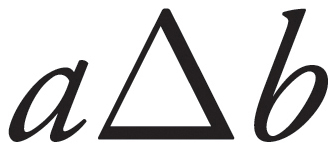 and asks for the value of
and asks for the value of  , so evaluate the expression in the parenthesis first.
, so evaluate the expression in the parenthesis first.  , which simplifies to
, which simplifies to  . Now, evaluate −1 Δ4.
. Now, evaluate −1 Δ4. 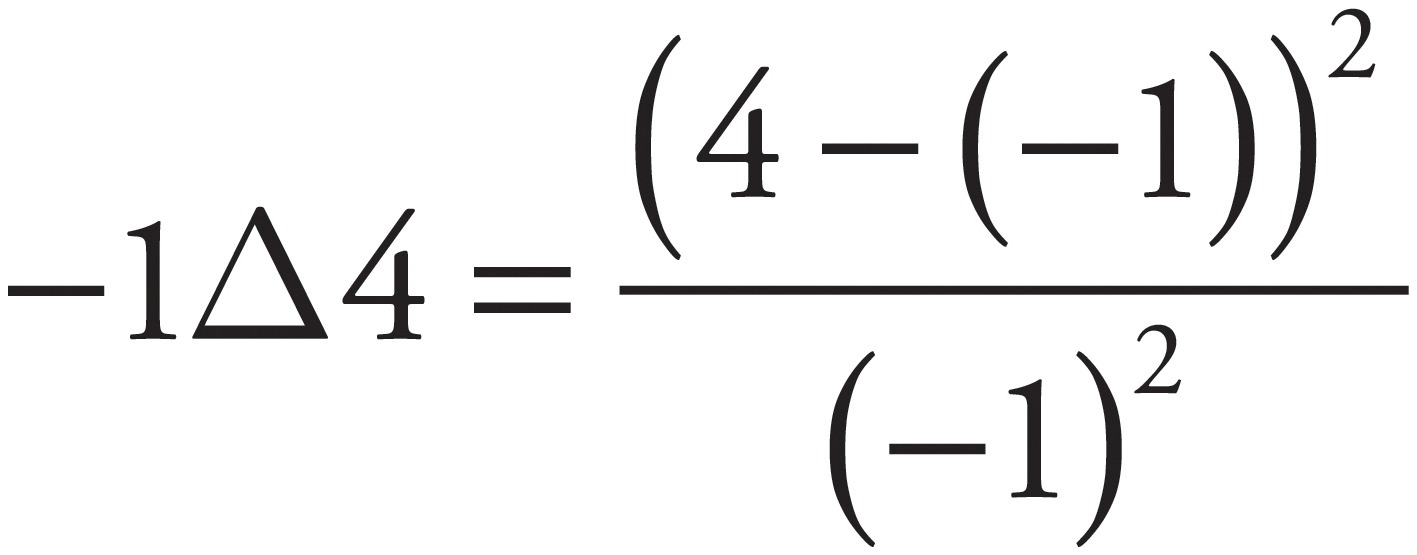 , which simplifies to
, which simplifies to 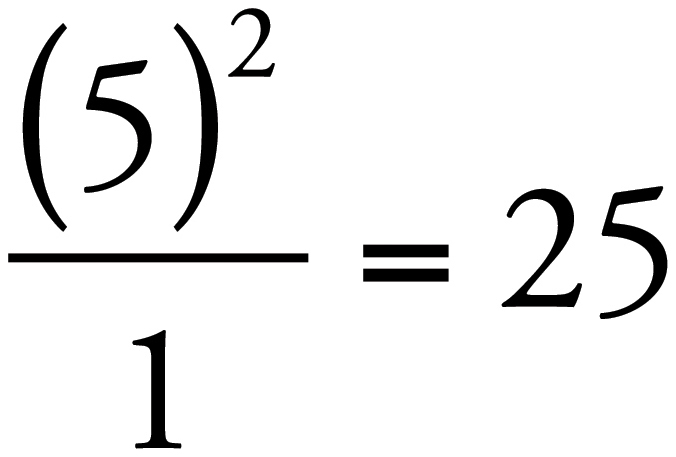 . The correct answer is (E).
. The correct answer is (E).
3. C
The problem does not specify the number of workers or envelopes each worker can stuff, so Plug In. Let the number of full-time workers be 5. There are  as many trainees as there are full-time workers, so there are
as many trainees as there are full-time workers, so there are 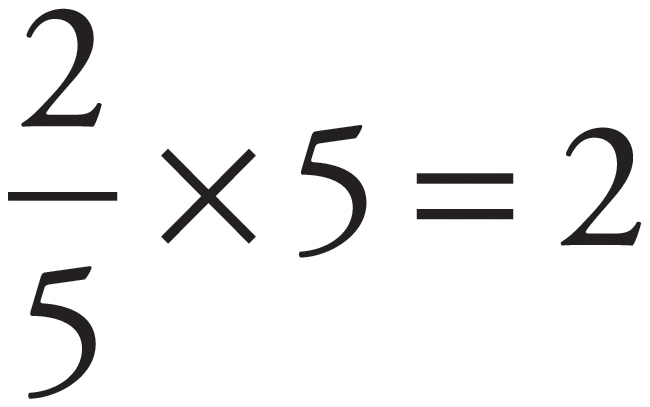 trainees. Let the number of envelopes each full-time worker can stuff per day be 3. Each trainee can stuff
trainees. Let the number of envelopes each full-time worker can stuff per day be 3. Each trainee can stuff  as many envelopes as can a full-time worker, so each trainee can stuff
as many envelopes as can a full-time worker, so each trainee can stuff  envelopes per day. Thus, each day the full-time workers stuff 5 × 3 = 15 envelopes, the trainees stuff 2 × 2 = 4 envelopes, and together the two groups stuff 15 + 4 = 19 envelopes. The trainees stuff 4 envelopes, so they stuffed
envelopes per day. Thus, each day the full-time workers stuff 5 × 3 = 15 envelopes, the trainees stuff 2 × 2 = 4 envelopes, and together the two groups stuff 15 + 4 = 19 envelopes. The trainees stuff 4 envelopes, so they stuffed 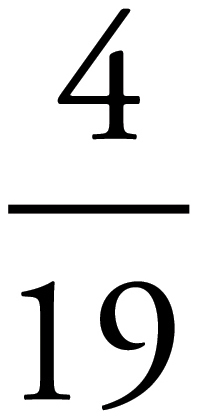 of the envelopes. The correct answer is (C).
of the envelopes. The correct answer is (C).
4. E
There are variables in the answer choices, so Plug In. Let x = 3 and y = 5. The larger group consists of 3 + 2 = 5 men and 5 + 4 = 9 women, for a total of 5 + 9 = 14 members. The probability of selecting a man from the larger group is  , and that is the target. Plug x = 3 and y = 5 into the answer choices, looking for the target of
, and that is the target. Plug x = 3 and y = 5 into the answer choices, looking for the target of  . The correct answer is (E).
. The correct answer is (E).
1. x = 110°
There are 180 degrees in a line, so 180 – 70 = 110.
2. x = 50°; y = 130°; z = 130°
There are 180 degrees in a line, and y and z each form lines with the 50° angle, so they each have a value of 180 – 50 = 130°. x forms a line with either y or z, so x has a value of 180 – 130 = 50°.
3. x = 60°; y = 120°; z = 120°
x forms a line with the 120 degree angle, so it equals 60. Then, with parallel lines, all the small angles are equal and all the big angles are equal. y and z are both big angles, so they both equal 120.
4. 
There are 360 degrees in a circle. Since the driver has traveled 270 degrees, he has traveled  of the track. Reduce to get
of the track. Reduce to get  .
.
5. D
The questions states that l1 and l2 are parallel, so redraw the figure twice, each time with just one of the lines intersecting l1 and l2. When looking at the line that goes down from left to right, notice that both a and d are “big” angles created as that line crosses l1 and l2 and therefore a and d must be equal. The correct answer is (D).
6. C
Statement (1) provides the measure of y, but provides no information about angle x, so Statement (1) is insufficient. Write down BCE. Statement (2) indicates that x + y = 180°, but it provides no information to determine the value of either angle, so Statement (2) is insufficient. Eliminate (B). The statements together provide the relationship between the angles and the value of y, so the statements together are sufficient. The correct answer is (C).
1. 8
The legs of a 45-45-90 triangle are the same. Since the other leg is 8, x must also be 8.
2. 60
Because all three sides of the triangle are equal, the angles of the triangle must also be equal. There are 180° in a triangle, so x = 180 ÷ 3, or 60°.
3. 5
Notice that this is a 3-4-5 right triangle, so x = 5. Alternately, by the Pythagorean Theorem, 32 + 42 = x2 yields 9 + 16 = x2, which simplifies to 25 = x2, or x = 5.
4. 3 < x < 11
The third side of a triangle is less than the sum and greater than the difference of the other two sides. Thus, x must be less than 7 + 4 = 11 and greater than 7 – 4 = 3.
5. 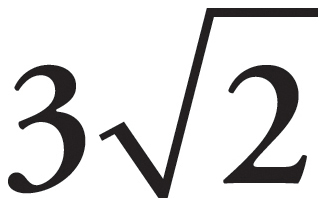
Since the figure is a square and line AC is the diagonal of the square, then the two triangles formed must be 45-45-90 triangles. The relationship for the sides of a 45-45-90 triangle is  . Since one of the sides is 3, then the diagonal must be
. Since one of the sides is 3, then the diagonal must be  .
.
6. 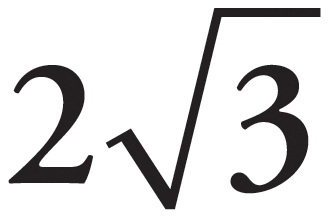
The triangle is a 30-60-90 triangle, so the relationship of its sides is  . 4 aligns with the 2x side, so the x side equals 2. Line segment BC is opposite the 60° angle, so BC aligns with the
. 4 aligns with the 2x side, so the x side equals 2. Line segment BC is opposite the 60° angle, so BC aligns with the 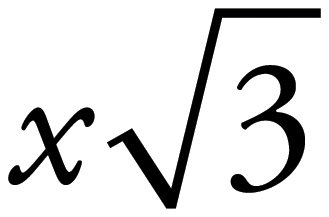 side, so BC is
side, so BC is 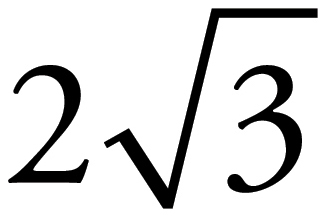 .
.
7. D
The figure is a triangle, and the interior angle of all triangles is 180. So, it is true that the values of angles A, B, and C equals 180, so A + B + C = 180. Substitute the values for the angles. Angle A is 90, angle B is x, and angle C is x – 20, so the equation can be rewritten as 90 + x + x – 20 = 180. Solve for x to find that x = 55. The value of angle C is x – 20, so C = 55 – 20 = 35. The question asks for the ratio of the measure of angle A to the measure of angle C, which is 90 to 35. The correct answer is (D).
8. C
Recognize that the figure may not be drawn to scale. Statement (1) provides that the measure of angle y, but it does not provide any way to solve for the value of x, so Statement (1) is insufficient. Write down BCE. Statement (2) indicates that AB = BC, which provides that x and y are equal, but it provides no means to determine their values, so Statement (2) is insufficient. Eliminate (B). Together, the statements provide that x = y = 80. The correct answer is (C).
1. Area = 25π, Circumference = 10π
The formula for area is πr 2, and the formula for circumference is 2πr. The radius is shown as 5, so area = 25π and circumference = 10π.
2. 12π
The area of circle is given by A = πr2, so the radius is 36π = πr2, which simplifies to 36 = r2, or r = 6. The circumference of a circle is given by C = 2πr, so the circumference is 2π(6) = 12π.
3. 60
The relationship between arc and circumference is equal to relationship between a central angle which describes the arc and 360°. Thus, since  ,
, 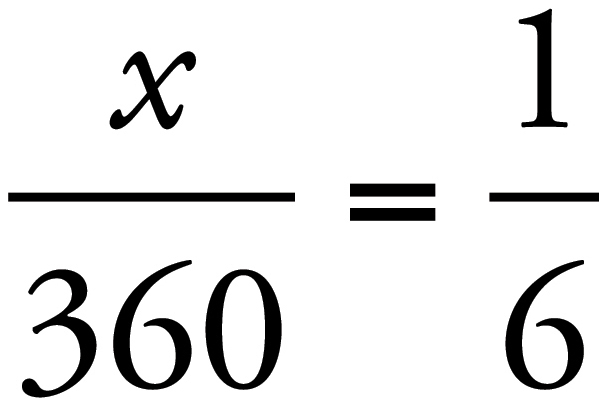 , which yields that x = 60.
, which yields that x = 60.
4. B
The area of the unshaded region is determined by subtracting the shaded region from the total region. The radius of the circle with center N is 5, so the area of the circle with center N is πr2 = π(5)2, or 25π. The radius of the circle with center P is equal to the diameter of the circle with center N, which is 2 × 5 = 10, so the area of the circle with center P is πr2 = π(10)2, or 100π. Thus, the area of the unshaded region is 100π – 25π = 75π. The correct answer is (B).
5. C
Statement (1) provides information about circle Q, but it provides no means by which to relate this information to circle P, so Statement (1) is insufficient. Write down BCE. Statement (2) provides a relationship between circles Q and P, but no values, so Statement (2) is insufficient. The statements together provide that the radius of circle Q is 6 ÷ 2 = 3, and that the radius of circle P is 3 ÷ 2 = 1.5, which allows the question to be answered. The correct answer is (C).
1. C
Statement (1) provides the number of people who paid deposits, which may seem sufficient, but the question allows for the possibility that a person may pay a deposit and yet not attend, so Statement (1) is insufficient. Write down BCE. Statement (2) provides the percent of people who attended after paying a deposit, but it does not indicate the number of people who paid a deposit, so Statement (2) is insufficient. Eliminate (B). The statements together indicate that 60% of the 70 people who paid deposits attend, which allows the question to be answered. The correct answer is (C).
2. D
Statement (1) provides an amount of pigment and a total volume, which allows solving for the amount of alcohol and subsequently the ratio of alcohol to pigment, as there are only two ingredients in the paint. Statement (1) is sufficient. Write down AD. Similarly, Statement (2) provides an amount of alcohol and a total volume, which also allows solving for the ratio of alcohol to pigment. Statement (2) is sufficient. The correct answer is (D).
3. C
Statement (1) provides the proportional distances between the three towns, but no specific values, so Statement (1) is insufficient. Write down BCE. Statement (2) provides the distance from Ferristown to Laredo, but it provides no information about the distance from Smithville to Ferristown, so Statement (2) is insufficient. Eliminate (B). Together, the statements provide that Ferristown to Laredo is 12 miles, which is  of the distance from Smithville to Laredo, and allows the question to be answered. The correct answer is (C).
of the distance from Smithville to Laredo, and allows the question to be answered. The correct answer is (C).
1. C
Statement (1) provides that x2 = 4, which indicates that x is equal to either 2 or –2. Statement (1) is insufficient. Write down BCE. Statement (2) provides only that x < 0, so Statement (2) is insufficient. Eliminate (B). Together the statements indicate that x = –2. The correct answer is (C).
2. B
Statement (1) provides that x2 = 4, which indicates that x is equal to either 2 or –2, and provides no information about y. Statement (1) is insufficient. Write down BCE. Statement (2) provides that y = 0. While no information is provided about the value of x, any value multiplied by 0 is equal to 0, so Statement (2) is sufficient. The correct answer is (B).
3. E
Statement (1) provides that x2 = 4, which indicates that x is equal to either 2 or –2, and provides no information about y. Statement (1) is insufficient. Write down BCE. Statement (2) provides that y2 = 9, which indicates that y is equal to either 3 or –3, and provides no information about x. Statement (2) is insufficient. Eliminate (B). Together the statements provide possible values for both x and y, but allow for both 6 and –6 as possible values of xy, so the statements together are insufficient. Eliminate (C). The correct answer is (E).
1. A
Statement (1) states that 2x < 1. Divide by 2 to yield that  . The answer to the question is “Yes.” Statement (1) is sufficient. Write down AD. Statement (1) states that
. The answer to the question is “Yes.” Statement (1) is sufficient. Write down AD. Statement (1) states that 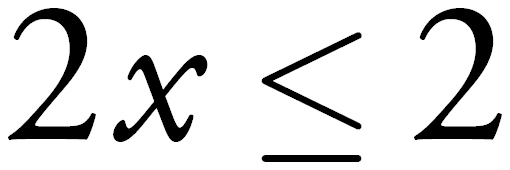 . Divide by 2 to yield that
. Divide by 2 to yield that 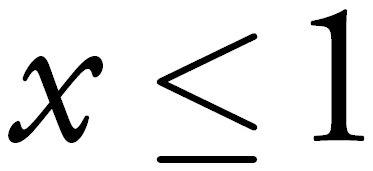 . x can equal 1, and the answer to the question is “No.” x can also equal
. x can equal 1, and the answer to the question is “No.” x can also equal  , and the answer to the question is “Yes.” When two values that satisfy a statement yield different answers to the question, the statement is insufficient. The correct answer is (A).
, and the answer to the question is “Yes.” When two values that satisfy a statement yield different answers to the question, the statement is insufficient. The correct answer is (A).
2. B
Statement (1) states that xy = 6. Let x = 2 and y = 3. These values satisfy the statement and the answer to the question is “Yes.” Try to arrive at an answer of “No.” Let x = –2 and y = –3. These values satisfy the statement and the answer to the question is “No.” When two values that satisfy a statement yield different answers to the question, the statement is insufficient. Write down BCE. Statement (2) states that xy2 = 12. Let x = 3 and y = 2. These values satisfy the statement and the answer to the question is “Yes.” Try to arrive at an answer of “No.” Because the product is not equal to 0, y2 must be positive. Thus, x must also be positive in order to yield a product of positive 12. Statement (2) is sufficient. The correct answer is (B).
3. E
Statement (1) states that xy is an integer. Let x = 2 and y = 3. These values satisfy the statement and the answer to the question is “Yes.” Try to arrive at an answer of “No.” Let  and y = 2. These values satisfy the statement and the answer to the question is “No.” When two values that satisfy a statement yield different answers to the question, the statement is insufficient. Write down BCE. Statement (2) states that x + y is an integer. Let x = 2 and y = 3. These values satisfy the statement and the answer to the question is “Yes.” Try to arrive at an answer of “No.” Let
and y = 2. These values satisfy the statement and the answer to the question is “No.” When two values that satisfy a statement yield different answers to the question, the statement is insufficient. Write down BCE. Statement (2) states that x + y is an integer. Let x = 2 and y = 3. These values satisfy the statement and the answer to the question is “Yes.” Try to arrive at an answer of “No.” Let  and
and 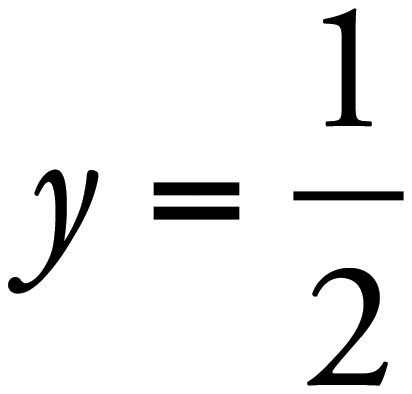 . These values satisfy the statement, and the answer to the question is “No.” Statement (2) is insufficient. Eliminate (B). Together, the statements may seem to be sufficient, and the values of x = 2 and y = 3 will allow a “Yes” answer, but let
. These values satisfy the statement, and the answer to the question is “No.” Statement (2) is insufficient. Eliminate (B). Together, the statements may seem to be sufficient, and the values of x = 2 and y = 3 will allow a “Yes” answer, but let 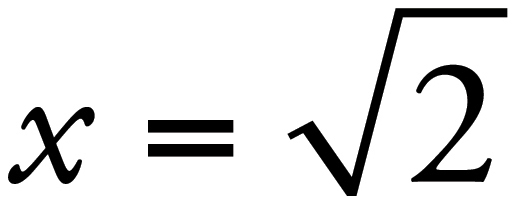 and
and 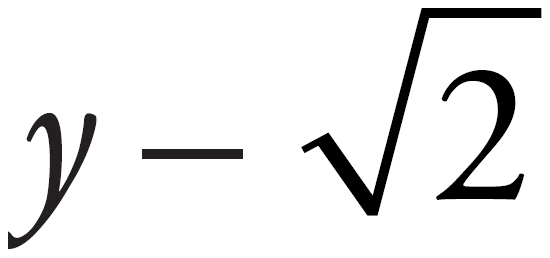 . These values satisfy the statements and the answer to the question is “No.” The statements together are insufficient. Eliminate (C). The correct answer is (E).
. These values satisfy the statements and the answer to the question is “No.” The statements together are insufficient. Eliminate (C). The correct answer is (E).
1. D
The underlined portion of the sentence contains the construction as not…but as which is a parallelism error as the appropriate structure is not as…but as. Eliminate (A). There are no obvious repeaters so evaluate each remaining choice individually. Choice (B) drops the as after but and does not resolve the original error as the sentence is still not parallel in construction. Eliminate (B). Choice (C) eliminates the use of the word as entirely, which creates the unidiomatic construction not…rather. Eliminate (C). Choice (D) fixes the original error and commits no new errors, so keep (D). Choice (E) eliminates the comparison word as which creates an idiom error. Eliminate (E). The correct answer is (D).
2. B
The underlined portion of the sentence contains the phrase at first begin which is redundant, so eliminate (A). There are no obvious repeaters, so evaluate the remaining answer choices individually. Choice (B) fixes the original error and makes no new errors, so keep (B). Choice (C) begins with a dependent clause, which is followed by an independent clause. However, the conjunction and is used to link two independent clauses rather than a dependent and independent clause. Eliminate (C). Choice (D) uses the conjunction Because which indicates that the migration of the birds from east to west causes them to turn south. This in a conjunction error, so eliminate (D). Choice (E) has a subject verb error as the sentence begins with a main subject, bird species, but that subject is not followed by a verb. Eliminate (E). The correct answer is (B).
3. E
The underlined portion contains the subject of the sentence, modern hiring managers. This subject needs a main verb. However, the sentence uses the present participle form of the verb, emphasizing, and the participial form of the verb cannot be the main verb of a sentence. Here, the participle introduces a participial phrase, emphasizing…temperament, which modifies managers. Eliminate (A) and look for obvious repeaters. Choice (B) obviously repeats the error, so eliminate (B). Evaluate the remaining answers individually. Choice (C) fixes the problem with the main verb. However, most hiring practices is the subject of a clause and also needs a verb. Choice (C) uses having struggled, a participial form, rather than a main verb form such as had struggled. As participles cannot be used as main verbs, eliminate (C). Choice (D) has a parallelism error. The main verb of the sentence, emphasized, is in the past tense, so any additional verbs in the sentence need to use some form of the past tense to maintain parallelism. Choice (D) uses struggle, the present tense, so eliminate (D). Choice (E) fixes the original error and makes no new errors. The correct answer is (E).
4. B
The underlined portion of the sentence begins with a modifying phrase. The noun following the modifying phrase is Irish wolfhound’s initial purpose, which is incorrectly modified by the opening phrase, which describes a breed of dog. The noun the modifying phrase needs to modify is purpose, as Irish wolfhound in this case is in the possessive form and acts as an adjective. Eliminate (A) and look for any obvious repeaters. There are no obvious repeaters, so evaluate the answer choices individually. Choice (B) fixes the original error by rearranging the sentence so that a breed of dog modifies Irish wolfhound and the main subject of the sentence is initial purpose. This choice makes no new errors, so keep (B). Choice (C) makes Irish wolfhound the subject of including, which is a participle and cannot be used as a main verb. Eliminate (C). Choice (D) has a parallelism error as included…is are not in similar verb tenses. Eliminate (D). Choice (E) has a verb form error as to hunting is not the correct construction for an infinitive. Eliminate (E). The correct answer is (B).
5. B
The underlined portion of the sentence contains the word large which is part of the phrase large and more consistent. The phrase large and more consistent is not parallel because more consistent is the comparative form of the adjective while large is not. To complete the comparison in a way that is also parallel, the comparative form of large, which is larger, must be used. Eliminate (A) and look for obvious repeaters. Choice (E) obviously repeats the error, so eliminate (E), as well. Evaluate the remaining answer choices individually. Choice (B) fixes the original error and makes no new errors, so keep (B). Choice (C) uses the word thus which creates the construction ways…thus which does not accurately convey the intended meaning of the sentence. Eliminate (C). Choice (D) pairs so that with ways creating the incorrect idiom ways…so that. Eliminate (D). The correct answer is (B).
6. E
The underlined portion of the sentence contains the comparison as with. As currently constructed, the sentence compares tech industry employee benefits to other industries which is an incorrect comparison. Eliminate (A) and look for obvious repeaters. There are no obvious repeaters, so evaluate the remaining answer choices individually. Choice (B) fixes the original error by including the pronoun those to refer to employee benefits, but also uses the verb did which is not parallel in tense with the verb were used later in the sentence. Eliminate (B). Choice (C) uses the pronoun they, which is ambiguous because it is unclear whether the pronoun refers to tech industry employee benefits or to benefits. Eliminate (C). Choice (D) does not fix the original error as the sentence still compares tech industry employee benefits to other industries. Eliminate (D). Choice (E) fixes the original error and makes no additional errors, so keep (E). The correct answer is (E).
7. B
The sentence contains a conjunction, and, so look for a parallelism error. However, it is unclear whether the list consists of two things that the organization does, aims and partnering with, or two of the organization’s aims, to aid and partnering. In either case, partnering is not the same verb form as the first part of the list, so there is a parallelism problem. Eliminate (A). Evaluate the remaining answer choices individually. Choice (B) fixes the original error and makes it clear that the list is comprised of two things the organization does, aims and partners, and makes no new errors, so keep (B). Choice (C) also fixes the original error as the list could now be aims to aid…and partner. However, this choice has an idiom error as the correct idiom is partner…to (do something) rather than partner…for (doing something). Eliminate (C). Choice (D) also fixes the original error but contains the pronoun their which is ambiguous in this sentence. Eliminate (D). Choice (E) uses the phrase in partnership which is not parallel with either aims or to aid, so eliminate (E). The correct answer is (B).
8. E
The underlined portion of the sentence contains the comparison construction equally likely to…as. The correct comparison construction is as…as. This is an incorrect comparison, so eliminate (A) and look for obvious repeaters. Choices (B) and (C) obviously repeat the error as they both contain the construction equally likely to…as. Eliminate (B) and (C). Evaluate the remaining answer choices individually. Choice (D) fixes the original error but is does not have a parallel comparison. The construction they will purchase is compared to the current one. Eliminate (D). Choice (E) fixes the original error and makes no further errors, so keep (E). The correct answer is (E).
9. A
The sentence is correct as written. The plural verb indicate matches with the plural subject an increase…and a decrease and the comparison, which uses the proper as…as structure, is correct in the sentence. Evaluate the remaining answer choices individually. Choice (B) uses the singular verb indicates which creates a subject-verb agreement error. Eliminate (B). Choice (C) uses the verb have been which is the incorrect verb tense. Eliminate (C). Choice (D) uses the verb indicating which eliminates the main verb of the sentence. Eliminate (D). Choice (E) uses the verb indicating which eliminates the main verb of the sentence. Eliminate (E). The correct answer is (A).
10. B
The underlined portion of the sentence contains a list of items that describes the concept of exchange that ancient Greek religious practices were premised on. The list states that gods and goddesses bestowed…humans gave…and when they. The final item in this list is both not parallel with the other items in the sentence and contains the ambiguous pronoun they which does not clearly refer to either gods or goddesses or humans. Eliminate (A) and look for obvious repeaters. Choice (C) is an obvious repeater as it also contains the ambiguous pronoun they, so eliminate (C), as well. Evaluate the remaining answer choices individually. Choice (B) fixes the original error by eliminating the use of the pronoun they and fixes the parallelism error by making the list of items bestowed…gave…constructed. Additionally, the use of the conjunction while emphasizes the transactional nature of the relationship better than the conjunction and. Keep (B). Choice (D) contains the construction gods and goddesses bestowed…and humans to give…and to construct. This is a parallelism error, so eliminate (D). Choice (E) eliminates the use of the pronoun they and uses the construction bestowed…gave…constructed, which is parallel. However, the sentence is rearranged to create a modifier error. As currently constructed, the phrase bestowed gifts describes the concept of exchange. This is in opposition to the intended meaning in which the concept of exchange is described by gods and goddesses bestowed gifts and humans gave…and constructed. Eliminate (E). The correct answer is (B).
11. A
The sentence is correct as written. The construction that was evident is consistent with the tense of the remainder of the sentence, and the idiom evident in is used correctly, so there appear to be no errors in this sentence. Because there appear to be no errors, there are no obvious repeaters. Evaluate the answer choices individually, looking for reasons to eliminate each.
Choice (B) used the unidiomatic construction evident by, so eliminate (B). Choice (C) changes the tense of the verb to evidenced which is not parallel to the rest of the sentence and also uses the unidiomatic construction evidenced with, so eliminate (C). Choice (D) commits the same verb tense error as (C) and also uses the unidiomatic construction evidenced of, so eliminate (D). Choice (E) uses the unidiomatic construction evident of, so eliminate (E). The correct answer is (A).
1. D
The subject of the question is the amygdala and the task of the question is revealed by the statement is true, which indicates this is a purpose question. The question asks which of the answer choices are true. Begin by determining what the passage says about the amygdala. The amygdala is discussed in the second paragraph, which states that MRI scans showed a reduction in the size of the amygdala for people who engaged in an eight-week meditation practice. The passage then goes on to state the purpose of the amygdala as the “fight or flight” part of the brain that dictates the response to stress. Next, the passage relates the amygdala’s response to mindfulness meditation to the prefrontal cortex’s response. Evaluate the answer choices one at a time, looking for one that is supported by the information in the passage.
Choice (A) uses the extreme language long-term damage, which is cause for suspicion. The passage mentions that meditation reduces the size of the amygdala but does not state anything about the long-term implications of the reductions in size, nor does the passage suggest any damage to the amygdala is caused by meditation. Eliminate (A). Choice (B) uses the extreme language less valuable, so be suspicious of this answer choice, as well. While the passage discusses the differences in the responses of the amygdala and the prefrontal cortex, the passage does not make any indication about the value of one over the other. Eliminate (B). Choice (C) also utilizes extreme language with the phrase direct correlation. The passage does not state that there is a correlation between the size of the amygdala and the thickness of the prefrontal cortex. The passage mentions both the size of the amygdala and the thickness of the prefrontal cortex but does state they are correlated, simply that they both occur. Eliminate (C). Choice (D) is supported by the passage, which discusses the size of the amygdala based on a response to meditation and then states that increased meditation may be capable of replacing our fearful responses to stress. In other words, the size of the amygdala has some link to the type of response exhibited under stress. Keep (D). Choice (E) utilizes recycled language as the passage does mention the relationship between the amygdala and the rest of the brain. However, the passage does not state that this relationship is impacted by the thickness of the prefrontal cortex. Eliminate (E). The correct answer is (D).
2. B
The subject of the question is the passage as a whole and the task is identified by the phrase primarily concerned with, so this is a primary purpose question. Evaluate the statements individually to determine which best describes the primary purpose of the passage.
Choice (A) is an example of extreme language because the passage does not attempt to convince the reader of anything. Eliminate (A). Choice (B) is a good description of the primary purpose of the passage, as the passage is primarily concerned with spreading information about the science and the debates regarding the brain’s response to meditation. Keep (B). Choice (C) is an example of extreme language as the passage does not argue that meditation is the most effective way to do anything. The passage is not concerned with the level of effectiveness of meditation. Eliminate (C). Choice (D) is a memory trap because the passage does mention those who believe that meditation should be considered a science in the last paragraph. However, this is not the primary purpose of the passage. Eliminate (D). Choice (E) appeals to outside knowledge and is also a memory trap as the passage is not primarily concerned with ways to better handle stress, but rather that meditation is commonly thought to be a way to handle stress, and the response to stress is discussed in the passage. Eliminate (E). The correct answer is (B).
3. D
The subject of the passage is the fearful response to stress, and the task of the passage is identified by the word inferred, so this is an inference question. The correct answer to inference questions must be true based on the information in the passage, so look for an answer choice that is definitely true given the contents of the passage.
While (A) is tempting, it is actually an example of extreme language. The passage states that responses to stress may be altered by practicing meditation, from fearful to rational. The passage does not definitively state if fearful responses can be replaced. Eliminate (A). Choice (B) is a memory trap from the passage’s statement that meditation may cause the thickness of the prefrontal cortex to increase but does not mention the likelihood of having a fearful response to stress based on the thickness of the prefrontal cortex. Eliminate (B). Choice (C) is a memory trap, as the passage discusses whether meditation should be considered a science but does not have that same debate over the research regarding fearful responses. Eliminate (C). Choice (D) is supported by the last sentence of the second paragraph and the first sentence of the third paragraph, which state These findings prompted researchers to hypothesize that increased meditation may be capable of replacing our fearful responses to stress with more rational ones. While researchers have called for more studies to be done on the mental and physical ramifications of mindfulness meditation. Keep (D). Choice (E) is a recycled language trap. The word MRI is used in the passage, but the passage states that MRIs show the amygdala. The passage does not state that MRI scans show fearful responses. Eliminate (E). The correct answer is (D).
4. A
The subject of the question is proponent of meditation-as-science and the task of the question is found in the phrase most likely to argue is not a science. This is an application question, so begin by determining what the passage states about proponents of meditation as a science. The passage states that these individuals define science as the study of the natural world through observation and experiment to produce a unified body of knowledge on a given subject. The question asks to identify which one of the answer choices is not considered a science based on that definition. Evaluate the answer choices individually.
Choice (A) does not meet the requirement that the study be of the natural world, nor does it seek to create a unified body of knowledge through observation and experiment. Keep (A). Choice (B) pertains to the natural world and produces a unified body of knowledge through observation. This fits the definition of science, so eliminate (B). Choice (C) is a study of the natural world that seeks to explain events based on observation, so eliminate (C). Choice (D) deals with observations of the natural world and experiments to predict future events. This matches the definition of science, so eliminate (D). Choice (E) produces a unified body of knowledge pertaining to the natural world through observation and experimentation with samples of wood. Eliminate (E). The correct answer is (A).
5. A
The subject of the question is the passage as a whole. The task of the question is found in the phrase primary purpose, so this is a primary purpose question. Evaluate the answer choices individually to determine which best describes the primary purpose of the passage.
Choice (A) is a good description of the primary purpose of the passage as the passage does seek to describe artificial neural networks, so keep (A). Choice (B) is a no such comparison trap answer. While the passage does discuss artificial neural networks and neural networks found in the brain, the passage does not contrast these different networks. Eliminate (B). Choice (C) is a memory trap. The passage does discuss the general construction of artificial neural networks but does not illustrate how to build them. Eliminate (C). Choice (D) is an example of extreme language as the passage does not argue for anything. The passage only provides information about neural networks. Eliminate (D). Choice (E) is a recycled language trap. The passage does mention the different units of an artificial neural network and their roles in producing intelligence, but this is not the primary purpose of the passage. The information about the units of the artificial neural network is only half of the information contained in the passage. Eliminate (E). The correct answer is (A).
6. C
The subject of the question is real neural networks. The task of the question is inferred, which indicates this is an inference question. The correct answer for inference questions must be true based on the information in the passage, so determine what the passage states about real neural networks. The passage states that real neural networks are found inside a brain and that artificial neural networks are designed to simulate the activity of real neural networks. Evaluate the answer choices, looking for one that is true based on this information.
Choice (A) is an example of extreme language as the passage does not suggest that real neural networks are to be considered superior to artificial neural networks. Eliminate (A). Choice (B) is a recycled language trap. The passage states that artificial neural networks has input, hidden, and output units and are designed to simulate real neural networks. However, the passage does not state that real neural networks contain those units. Eliminate (B). Choice (C) is true based on the information in the passage. If artificial neural networks are designed to simulate the activity of real neural networks, then it can be said that real neural networks inspired the development of artificial neural networks. Keep (C). Choice (D) is a no such comparison answer as the passage does not compare the capability of real and artificial neural networks. Eliminate (D). Choice (E) is an example of extreme language as the passage does not suggest that real neural networks will someday become obsolete. Eliminate (E). The correct answer is (C).
7. C
The subject of the question is the optimal flow of information through an artificial neural network. The task of the question is revealed by the phrase according to the passage, so this is a retrieval question. Determine which of the answer choices best represents the subject of the question by first determining what the passage says about the flow of information through an artificial neural network. The second paragraph of the passage gives the flow of information through as Information is passed to the input units, which trigger the hidden units. The hidden units are activated and the sum of the inputs it receives triggers the next unit to fire if the sum exceeds a certain threshold. By giving the output units a model to compare the result of the learning process to, the artificial neural network can learn where to place more weight in order to make the result of the output unit more closely resemble that of the model. Evaluate the answer choices individually, looking for one that optimizes this path.
Choice (A) is incorrect, as the input units do not directly pass information to the output units. Eliminate (A). Choice (B) is incorrect as the hidden units do not change the input units to more closely resemble the model. Eliminate (B). Choice (C) accurately reflects the optimized path for an artificial neural network as stated in the passage, so keep (C). Choice (D) does not mention the hidden units nor the output units, so eliminate (D). Choice (E) states that the output units analyze a model and improve it before handing the model to the input units, which does not match the information in the passage. Eliminate (E). The correct answer is (C).
1. Strengthen question.
Look for the conclusion and premise in the question. The correct answer will strengthen a premise that supports the conclusion.
2. Inference question.
Look for information in the passage that pertains to the subject of the question.
3. Evaluate question.
Look for assumptions in the passage.
4. Assumption question.
To find the correct answer, look for the gap in the argument.
5. Flaw question.
The passage should contain information that can be disputed. Find that information and anything that contradicts it.
6. Weaken question.
Look for the conclusion and premise in the argument. The correct answer will weaken a premise that supports the conclusion.
7. Identify the reasoning question.
The passage will provide a response to an assertion and the correct answer will reveal how the response was made.
8. Resolve/Explain question.
Look for two incongruent facts in the passage and find a way to explain why both facts could be simultaneously true.
Integrated Reasoning sections are scored on a scale from 1 to 8. Use the chart below to approximate your score.
Please note that Integrated Reasoning items are scored all or nothing. For example, Table Analysis items have three parts. You must have picked the correct answer for each part to count the item as correct.
Please also note that Integrated Reasoning sections on the GMAT contain experimental questions that do not count toward your score. The chart below has been adjusted to compensate for the fact that these sections do not contain experimental questions.
|
Number Correct
|
Approximate Score
|
|
0–1
|
1
|
|
2
|
2
|
|
3–4
|
3
|
|
5–6
|
4
|
|
7–8
|
5
|
|
9–10
|
6
|
|
11
|
7
|
|
12
|
8
|
1-1. True
Read the text blurb to learn that % Change refers to the time period from 2009 to 2010. Sort the table by Riders to identify the station with the median annual number of riders: 34th Street/Penn Station (Red Lines). Note that Grand Central/42nd Street is the only other station that experienced a decrease in ridership from 2009 to 2010. Determine the actual decrease in ridership for these two stations.
Approximately 27,000,000 riders visited 34th Street/Penn Station (Red Lines) in 2010. The number of riders who visited this station decreased by 1.1% from 2009, so 2010 ridership was 98.9% of 2009 ridership. Set up a proportion,  , where x represents 2009 ridership. Use the calculator to find that x ≈ 27,300,000. The actual decrease in ridership for 34th Street/Penn Station (Red Lines) was approximately 27,300,000 – 27,000,000 = 300,000 riders.
, where x represents 2009 ridership. Use the calculator to find that x ≈ 27,300,000. The actual decrease in ridership for 34th Street/Penn Station (Red Lines) was approximately 27,300,000 – 27,000,000 = 300,000 riders.
Calculate the actual decrease in ridership at the Grand Central/42nd Street station in the same manner. Approximately 85,000 fewer riders visited Grand Central/42nd Street in 2010 than had visited the station in 2009. Since the actual decrease was greater at 34th Street/Penn Station (Red Lines), the statement is true.
1-2. True
Sort the table by Connecting Subway Lines to quickly identify which stations have 3 connecting lines and which have 5. Use the calculator to determine that the average number of riders at stations with 5 connecting lines is 31,307,134, and that the average number of riders at stations with 3 connecting lines is 23,434,760. Use the calculator again to determine that the average at stations with 5 connecting lines is approximately 1.34 times the average at stations with 3 connecting lines. Expressed as a fraction, 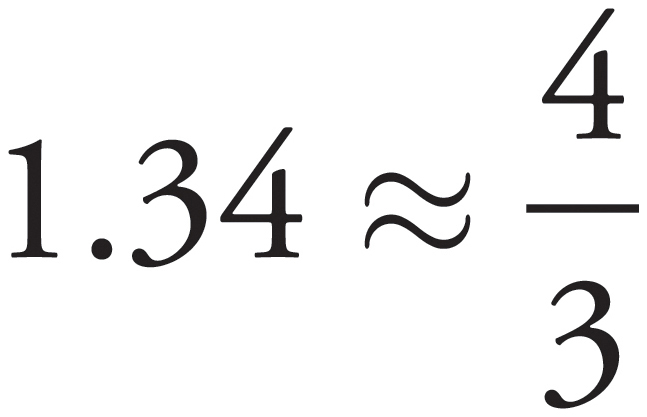 , so the statement is true.
, so the statement is true.
1-3. False
Sort the table by % Change to quickly identify the station with the greatest percent increase in riders: Lexington Ave/59th Street. Now, sort the table by Riders to quickly identify the station with the least number of riders: 86th Street (Green Lines). Since Lexington Ave/59th Street does not have the least number of riders, the statement is false.
The passage identifies mutually exclusive groups of doctors: doctors who either graduated with honors or who did not, and doctors who are either covered by Frank’s medical plan or who are not. Use a group grid to represent the information provided. Since all of the information refers to the same population of doctors, the two columns are linked; a single group grid can be used to find the answer in both columns.
Complete the bottom row of the grid to determine the number of doctors whose services are not covered by Frank’s medical plan. If 3 doctors whose services are covered graduated with honors, and 27 doctors whose services are covered graduated without honors, then the services of 3 + 27 = 30 doctors are covered by Frank’s plan. If there are 45 doctors in Frank’s area, then the services of 45 – 30 = 15 doctors are not covered by Frank’s plan. The correct answer is (B).
Complete the middle row of the grid to determine the number of doctors who didn’t graduate with honors and aren’t covered by Frank’s medical plan. If 8 of the 45 local doctors graduated with honors, then 45 – 8 = 37 doctors graduated without honors. Of those 37 doctors, 27 of them are covered by Frank’s plan. Therefore, 37 – 27 = 10 doctors without honors aren’t covered by Frank’s plan. The correct answer is (A).
The first column asks for the number of orchids purchased, and the second asks for the number of dahlias purchased. Translate the information provided into an algebraic equation, 1.35o + 1.8d = 18, where o and d represent the number of orchids and dahlias purchased, respectively. Since o and d are related by a single equation, the two columns are linked.
The number of each type of flower must be an integer. Therefore, if Faustino spends $18 on orchids and dahlias, and each orchid costs $1.35, Faustino must buy an even number of orchids (an odd number of orchids would never yield an integer value for the price of the flowers). Eliminate (D) in the first column because it is odd. Plug in the remaining answers to determine the numbers of flowers purchased. Begin with (C), 4 orchids.
If o = 4, then 1.35(4) + 1.8d = 18. Simplify the equation, so that 1.8d = 12.60. Divide both sides of this equation by 1.8, so that d = 7. Since 7 is not an answer choice, eliminate (C) in the first column.
The more orchids Faustino purchases, the fewer dahlias he purchases. Plug in o = 6, so that 1.35(6) + 1.8d = 18. Simplify the equation, so that 1.8d = 9.90. Dividing both sides of this equation by 1.8 yields a non-integer value of d, so eliminate (E) in the first column.
Plug in o = 8, so that 1.35(8) +1.8d = 18. Simplify the equation, so that 1.8d = 7.2. Divide both sides of this equation by 1.8, so that d = 4. The correct answer in the first column is (F), and the correct answer in the second column is (C).
4-1. B
The graph is clearly labeled, so there’s no reason to read the text blurb. The first question asks for the slope of the regression line. Open the drop-down box and review the answer choices. The line’s slope is negative, so eliminate (D) and (E). The line clearly passes through points (1, 10) and (4, 6), so the slope of the line is approximately equal to 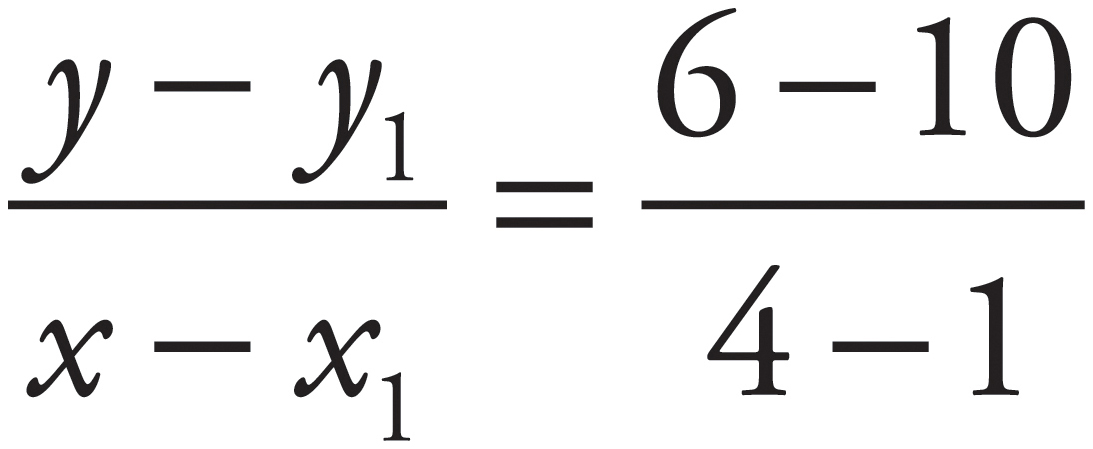 , or
, or  . Expressed as a decimal,
. Expressed as a decimal, 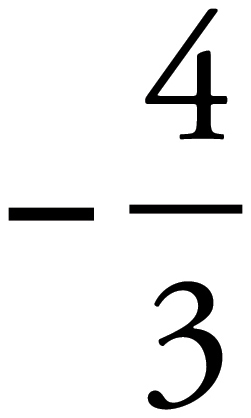 is approximately equal to −1.3. The correct answer is (B).
is approximately equal to −1.3. The correct answer is (B).
4-2. D
The question asks for the percent by which the number of students within 11 inches of the target’s center after day 2 is greater or less than it was before any training. Open the drop-down box and review the answer choices. More students were within 11 inches of the target after 2 days of training, so eliminate (A) and (B). Before any training, 2 students were within 11 inches of the target’s center. After 2 days of training, 4 students were within 11 inches of the target’s center. Use the percent change formula,  , to calculate the percent increase, which is equal to
, to calculate the percent increase, which is equal to 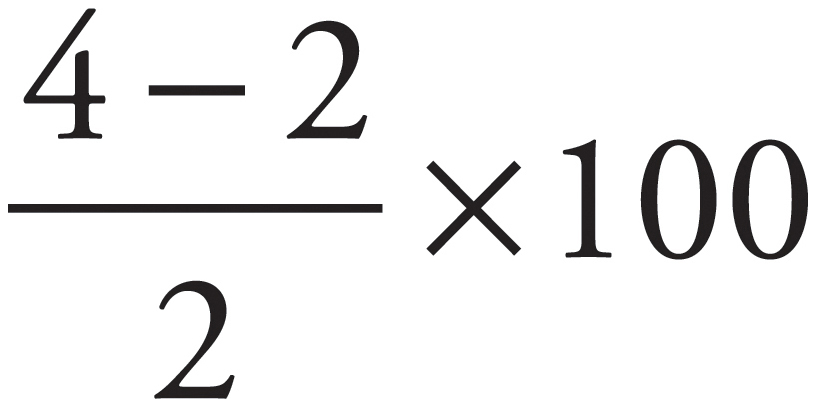 , or 100%. The correct answer is (D).
, or 100%. The correct answer is (D).
The first column asks for the statement that most strengthens the argument, and the second column asks for the statement that most weakens the argument. Since the questions involve opposite tasks with respect to the same argument, the two columns are linked. Treat this as you would a Critical Reasoning question. Find the argument’s premises and conclusion, and then use them to find an assumption.
The archaeologists conclude that some human ancestors developed nautical skills millions of years earlier than previously discovered. This conclusion is based on the discovery, on an island 40 miles from Greece, of stone tools dating to the Paleolithic Age. The argument assumes the tools were brought to the island by boat from mainland Greece.
Beginning with (A), evaluate the answers one at a time. Whether the tools were used for fishing is out of scope. What matters is how the tools got to the island, so eliminate (A). Choice (B) likens the tools to those used by Paleolithic human ancestors who lived on the mainland, reinforcing the assumption that the tools were brought to the island by boat. Keep (B) for the first column. Choices (C) and (D) are out of scope, as how the tools may have been used is irrelevant so eliminate (C) and (D). Choice (E) suggests the Mediterranean Sea dried up 5 million years ago and remained that way for 3 million years. If this is true, then the answer choice weakens the assumptions that the tools were brought to the island by boat, so eliminate (E). Choice (F) is out of scope. Whether the tools were used for purposes other than the construction of boats is irrelevant. The correct answer in the first column is (B), and the correct answer in the second column is (E).
6-1. No
The CD Offerings tab relates the cost and length of an investment to the interest rate it earns. The Memo tab explains how the bank uses rewards and penalties to encourage longer-term investment. According to the CD Offerings tab, a 1-year, $11,000 investment earns 2.2% interest in the first year. According to the Memo tab, a 1-year investment doesn’t qualify for bonus interest. Use the calculator to determine that 2.2% of $11,000 is $242. Since $242 < $250, the answer to the first question is “No.”
6-2. No
According to the CD Offerings tab, a 5-year, $9,500 investment earns 2.5% interest, compounded annually. According to the Memo tab, a 5-year investment earns an additional 0.1% interest in the first year. Use the calculator to determine that 2.6% of $9,500 is $247. Since $247 < $250, the answer to the second question is “No.”
6-3. Yes
According to the CD Offerings tab, a 10-year, $9,500 investment earns 2.8% interest, compounded annually. According to the Memo tab, CDs with 10-year terms earn an additional 0.1% interest in the first year. Use the calculator to determine that 2.9% of $9,500 is $275.50. Since $275.50 > $250, the answer to the third question is “Yes.”
7-1. No
The CD Offerings tab relates the cost and length of an investment to the interest rate it earns. The Memo tab explains how the bank uses rewards and penalties to encourage longer-term investment. According to the CD Offerings tab, a 1-year, $20,000 investment earns 2.2% interest, compounded annually. According to the Memo tab, a 1-year investment doesn’t qualify for bonus interest. Use the calculator to determine that 2.2% of $20,000 is $440. Since $440 isn’t between $500 and $600, the answer is “No.”
7-2. Yes
According to the CD Offerings tab, a 5-year, $4,000 investment earns 2.5% interest, compounded annually. According to the Memo tab, a 5-year investment earns an additional 0.1% interest during the first year. Use the calculator to determine that the CD is worth 1.026 × $4,000 = $4,104 at the end of the first year. Similarly, the investment is worth (1.025)4 × $4,104 = $4,530.05 at the end of the fifth year. Thus, the total interest earned is $4,530.05 − $4,000 = $530.05, and the answer is “Yes.”
7-3. No
According to the CD Offerings tab, a 2-year, $10,000 investment earns 2.4% interest, compounded annually. According to the Memo tab, a 2-year investment doesn’t qualify for bonus interest. Use the calculator to determine that the CD is worth (1.024)2 × $10,000 = $10,485.76 at the end of the second year. Thus, the total interest earned is $10,485.76 − $10,000 = $485.76, and the answer is “No.”
8-1. No
The CD Offerings tab relates the cost and length of an investment to the interest rate it earns. The Memo tab explains how the bank uses rewards and penalties to encourage longer-term investment. According to the Memo tab, the schedule of penalties has been revised, so penalties for early withdrawals must have existed prior to the policy changes. The statement cannot be inferred from the information provided, so the answer is “No.”
8-2. No
According to the Memo tab, the bank policies described are designed to shift the balance of customers’ CD accounts towards those with longer maturity terms. Although preferred customers receive a bonus that new customers do not receive, there’s no indication that the bonus rewards them for their loyalty. The statement cannot be inferred from the information provided, so the answer is “No.”
8-3. Yes
According to the Memo tab, the bank intends to steer customers toward CDs with longer maturity terms. As an incentive, the bank will reward longer-term investments with bonus interest. If the bank successfully shifts even one customer to a longer-term CD, then it will pay a higher average interest rate to customers. The statement can be inferred from the information provided, so the answer is “Yes.”
9-1. True
Read the text blurb to learn that Popular Vote (Millions) refers to the number of votes earned by the winning candidate. Sort the table by President to quickly identify Nixon, Reagan, Clinton, and Bush as the presidents who served two terms. The question asks for the two-term president with the smallest percent increase in Popular Vote from one term to the next, so use the percent change formula,  . Compare
. Compare  for the two-term presidents. William Clinton’s
for the two-term presidents. William Clinton’s  percent increase in Popular Vote was the smallest percent increase for the two-term presidents, so the statement is true.
percent increase in Popular Vote was the smallest percent increase for the two-term presidents, so the statement is true.
9-2. False
Sort the table by Political Party to quickly determine that there are 6 Democratic presidents and 7 Republican presidents listed in the table. Use the calculator to determine that the 6 Democratic presidents earned 2,200 electoral votes, averaging 2,200 ÷ 6 ≈ 367 electoral votes per candidate, and the 7 Republican presidents earned a total of 2,818 electoral votes, averaging 2,818 ÷ 7 ≈ 403 per candidate. Since 403 > 367, the statement is false.
9-3. True
Sort the table by % of Popular Vote to help identify the presidents for whom the difference between % of Popular Vote and % of Electoral Vote is least. In both 2000 and 2004, the difference between the two percentages is less than 3, much less than the difference for any other president. In both years, George W. Bush was president, so the statement is true.
10-1. Yes
Memo #1 explains the company’s airfare reimbursement policy, Memo #2 details the average, standard deviation, and sample size for flights from each region to Bloomsbury, and Email #1 describes the number of tickets purchased at various prices in the West region. According to the Memo #2 tab, the West and Midwest regions had the same average ticket price, but no other region had a ticket price lower than that of the Midwest. The statement can be inferred from Memo #2, so the answer is “Yes.”
10-2. No
According to Memo #1, Regional Office Managers will be responsible for arranging the travel reservations for all Level 2 managers….However, no information is provided about who will attend the annual management retreat in addition to Level 2 managers. The statement cannot be inferred from the information in any of the tabs, so the answer is “No.”
10-3. Yes
According to Memo #1, Regional Office Managers may delegate the task as they wish. Therefore, ROMs need not make the reservations personally. The statement can be inferred from Memo #1, so the answer is “Yes.”
11-1. True
Memo #1 explains the company’s airfare reimbursement policy, Memo #2 details the average, standard deviation, and sample size for flights from each region to Bloomsbury, and Email #1 describes the number of tickets purchased at various prices in the West region. According to Memo #1, any ticket priced 1 standard deviation or more below average will be reimbursed a “Budget Bonus” of 50% of the difference between the ticket price and the average airfare from that region. According to Memo #2, airfare from the West region averages $200 with a standard deviation of $25. Therefore, the West region will receive a “Budget Bonus” for any flight costing $175 or less. According to Email #1, the West region bought 18 tickets at $150 per ticket. Thus, the West region will receive $25 for each one of these 18 tickets. Use the calculator to determine that 18 × $25 = $450, which matches the information in the statement. The statement is True.
11-2. False
Standard deviation is the measure of the spread, or range, of the numbers within a set. Based on Memo #2, this may suggest that it is true that the two regions with the least sample size also had the least difference between the most and least expensive airfare found during research, the information provided in the question gives no insight into how many standard deviations were required to encompass all the data points. Therefore, it is impossible to know the distance between the greatest and least values for the information. The statement is False.
11-3. True
This question asks about the averages of the researched airfare prices, so look at Memo #2. Determine the combined mean airfare of the researched regions by finding the sum of total amount for each of the regions individually, and then dividing that number by the total number of the sample size. The combined mean airfare for the researched regions is $271.42. This is less than the mean airfare for the Northeast, Mid-Atlantic, and Plains regions. The statement is True.
Choice C
Memo #1 explains the company’s airfare reimbursement policy, Memo #2 details the average, standard deviation, and sample size for flights from each region to Bloomsbury, and Email #1 describes the number of tickets purchased at various prices in the West region. According to Memo #1, any ticket priced at or below one standard deviation above the mean is eligible for reimbursement. According to Memo #2, airfare from the West region averages $200 per ticket with a standard deviation of $25. Therefore, any ticket priced at or below $225 is fully reimbursed. According to Email #1, 22 of the 30 tickets purchased in the West region are priced within this range. Thus, the probability a randomly selected ticket is eligible to be fully reimbursed is  , which reduces to
, which reduces to 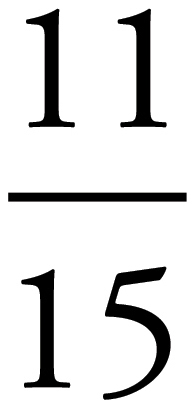 . The correct answer is (C).
. The correct answer is (C).
1-1. A
Open the drop-down menu and review the answer choices. More clocks are produced on Tuesday than on Wednesday, so eliminate (D) and (E). According to the histogram, 75 clocks are produced on Tuesday and 40 are produced on Wednesday. Express the ratio as a fraction, 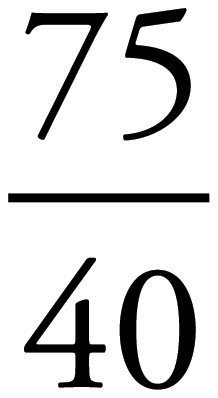 , which can be reduced to
, which can be reduced to 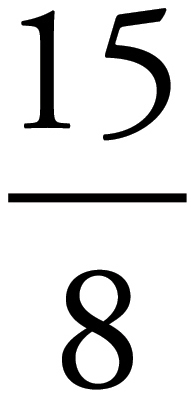 . The correct answer is (A).
. The correct answer is (A).
1-2. D
According to the histogram, 90 clocks are produced on Monday and Wednesday, and 250 clocks are produced during the week, so that 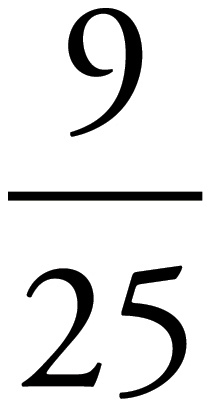 of the clocks are produced on Monday and Wednesday. To convert this fraction into a percentage, multiply the numerator and denominator by 4, so that
of the clocks are produced on Monday and Wednesday. To convert this fraction into a percentage, multiply the numerator and denominator by 4, so that 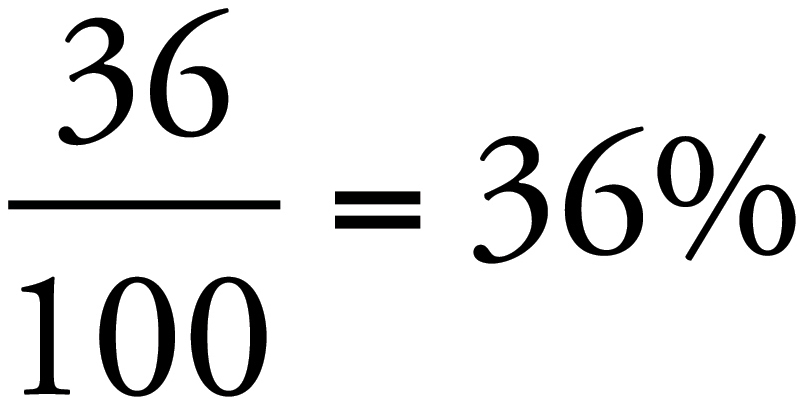 of the clocks are produced on Monday and Wednesday. The correct answer is (D).
of the clocks are produced on Monday and Wednesday. The correct answer is (D).
The first column asks for the statement that most weakens Company X’s argument, and the second column asks for the statement that most weakens the Consultant’s argument. Since the tasks involve different arguments, the columns are not linked. Treat these questions as Critical Reasoning questions. Begin with the first column.
Company X concludes that it will purchase new computers that run Portals 8, basing its decision on the desire to compete effectively in the modern economy and the fact that its computer technology is out of date. This argument exhibits the planning pattern, so Company X assumes that there’s no problem with its plan to purchase Portals 8. Because this is a weaken question, look for an answer that introduces a problem with the plan.
Choices (A), (B), and (D) are out of scope. Whether GreenCap is more efficient, the most cutting-edge, or more expensive is irrelevant, since Company X has decided to purchase Portals 8. Choice (C) is also out of scope. Company X bases its decision on its desire to compete in the economy. When the operating systems were released is irrelevant. Choice (E) states that Portals 8 is available in different versions with different price levels, strengthening Company X’s argument by making Portals 8 more appealing. Choice (F) weakens Company X’s argument. If Portals 8 contains bugs and design flaws that will impair its ability to compete in the modern economy, then there’s a problem with Company X’s plan to buy Portals 8. The correct answer in the first column is (F).
Now, consider the second column. The Consultant concludes that Company X should purchase GreenCap instead of Portals 8, basing the decision on Company X’s desire to complete effectively in the modern economy and the fact that GreenCap costs substantially less than does Portals 8. This argument, too, exhibits the planning pattern. Because this is a weaken question, look for an answer that introduces a problem with the Consultant’s plan.
Choices (A), (B), and (C) are out of scope. Whether GreenCap is more efficient, the most cutting-edge, or has been available for three years is irrelevant. What matters is whether GreenCap will better allow Company X to compete in the economy. Choice (D) weakens the Consultant’s argument by challenging the premise that GreenCap costs substantially less. If GreenCap requires an annual maintenance agreement that makes it more expensive overall, then there’s a problem with the Consultant’s plan to save Company X money. Choice (E) weakens the Consultant’s argument indirectly by making Portals 8 seem more appealing. However, without information describing how price levels for Portals 8 will affect Company X, the extent to which this answer weakens the Consultant’s argument is unclear. Eliminate (E). Choice (F) strengthens the Consultant’s argument by suggesting a reason for Company X to purchase GreenCap instead of Portals 8. The correct answer in the second column is (D).
3-1. C
A quick glance at the graph reveals that ice cream consumption is relatively consistent when compared to cheese consumption, which tends to increase over time. Thus, the year with the lowest total consumption will be the year with the lowest cheese consumption, 1989.
Open the drop-down menu to review the answer choices. In 1989, ice cream consumption exceeded cheese consumption, so eliminate (A) and (D). Per capita ice cream consumption was roughly 29 pounds, while per capita cheese consumption was roughly 24 pounds. Express the ratio as a fraction, 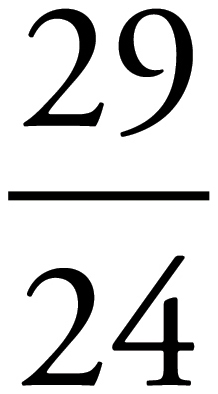 . Since
. Since 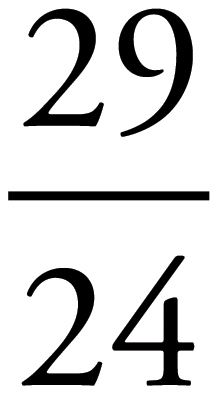 is closer to
is closer to 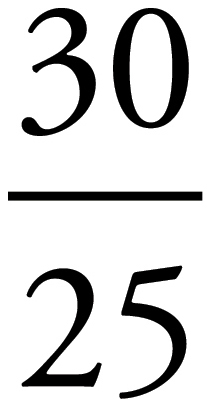 , or
, or  , than it is to
, than it is to  , or
, or  , the correct answer is (C).
, the correct answer is (C).
3-2. B
The question asks for the relationship between the slopes of the two regression lines. A quick glance at the graph reveals that the regression line for ice cream slopes downward while the regression line for cheese slopes upward. Open the drop-down menu to review the answer choices. Eliminate (A) and (C), because the slope of the regression line for ice cream is less than the slope of the regression line for cheese. The correct answer is (B).
The first column asks for the statement that most strengthens the committee member’s response, and the second column asks for the statement that most weakens the committee member’s response. Since the questions involve opposite tasks with respect to the same argument, the two columns are linked. Treat this as you would a Critical Reasoning question. Begin with the first column.
The XM representative argues that the costly and time-consuming review should be waived, because less than two percent of XM projects have ever been rejected. The committee member counters that the review should not be waived, because failing to review the project entails failing to observe innovations in geo-engineering that may need guidelines drafted for the safety of subsequent projects. Thus, the committee member is concerned with safety throughout the industry and seems to assume that reviews are the only way to observe innovations that can lead to the drafting of guidelines. Because this is a strengthen question, look for answers that reinforce this assumption.
Choice (A) weakens the committee member’s response by breaking the link between the review and the observation of innovations. If XM’s current project is nearly identical to a project that already passed review, then the committee can expect to see nothing new from a review. Choice (B) is out of scope. The percentage of CL’s projects which have been rejected is irrelevant to the argument that XM’s project should be reviewed. Choice (C) strengthens the argument that XM’s project should be reviewed by suggesting that opportunities for review are limited. If new innovations are reviewed only once, then all new innovations should be reviewed. Choices (D), (E), and (F) are out of scope. Whether XM’s projects are peer-reviewed, Geo-engineering deserves careful monitoring, or the committee has had to reverse some of its decisions is irrelevant to the argument that innovation can be observed, and guidelines drawn up, only when projects are reviewed by the committee. The correct answer in the first column is (C), and the correct answer in the second column is (A).
The first column asks for the current population of insect species X, and the second column asks for the current population of insect species Y. The passage provides the constant rate at which the population of each species changes, and states that in four years, the populations will be equal. Since the information provided can be used to write a single equation relating the current populations of species X and Y, the two columns are linked. Translate the information into an algebraic equation.
The population of species X decreases at a rate of 10% per year, so each year, only 90% of the population survives. The population of species Y decreases at a rate of 15% per year, so each year, only 85% of the population survives. After 4 years, the two populations will be equal, so x(0.9)4 = y(0.85)4, where x and y represent the current populations of species X and Y, respectively. Note that, because the population of species Y decreases faster than the population of species X, the current population of Y must be greater than that of X.
Manipulate the equation so that the ratio  can be determined. Divide both sides of the equation by y(0.9)4, so that
can be determined. Divide both sides of the equation by y(0.9)4, so that  . Use the calculator to determine that
. Use the calculator to determine that 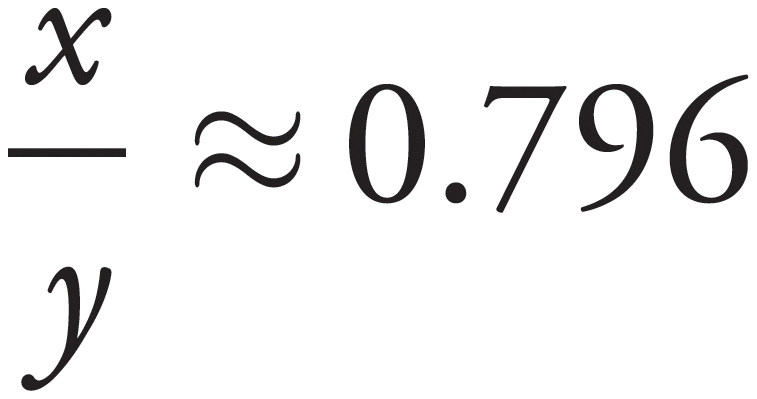 .
.
In the Current Population column, look for two values whose ratio is just under 0.8. Since 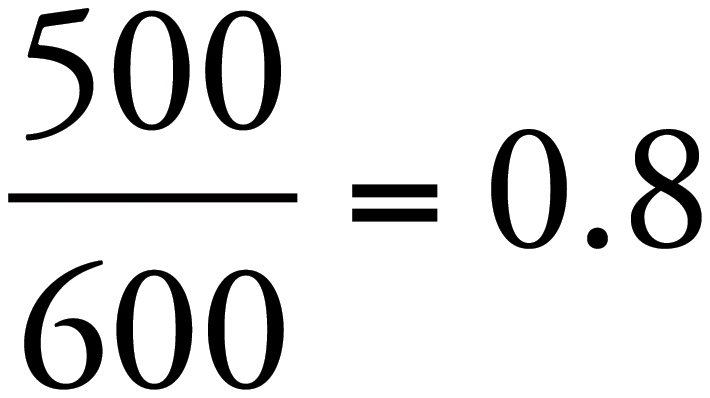 , try
, try  . Expressed as a decimal,
. Expressed as a decimal,  , which is too less than 0.8. To increase the ratio, either increase the numerator or decrease the denominator. The next least possible numerator is 525. Since
, which is too less than 0.8. To increase the ratio, either increase the numerator or decrease the denominator. The next least possible numerator is 525. Since 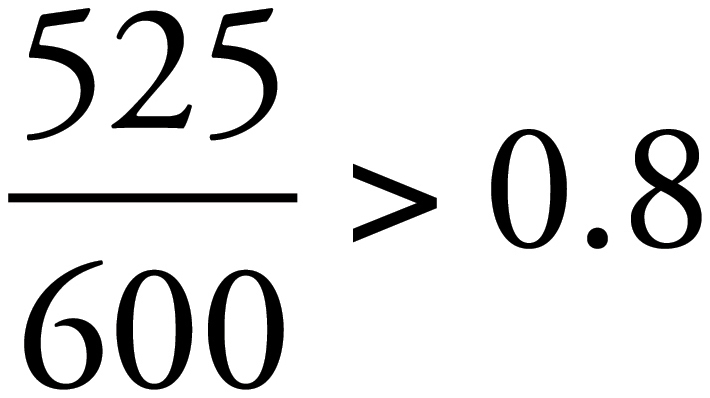 , try decreasing the denominator. Expressed as a decimal,
, try decreasing the denominator. Expressed as a decimal, 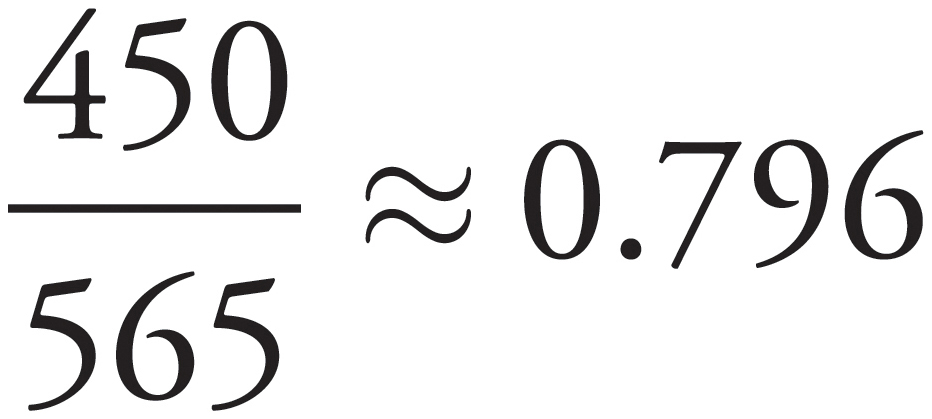 . The correct answer in the first column is (A), and the correct answer in the second column is (C).
. The correct answer in the first column is (A), and the correct answer in the second column is (C).
6-1. No
Email #1 describes the company’s plan to increase revenue by ramping up advertising to females aged 15−25. Email #2 identifies the two most popular programs among females aged 15−25. Memo #1 presents advertising and viewership data for the two programs. According to Memo #1, 45% of females aged 15−25 watch Blonde Fury. However, none of the tabs provide information about other age and gender groups. Since the statement cannot be inferred from the information provided, the answer is “No.”
6-2. No
According to Memo #1, a greater percentage of females aged 15−25 watches Blonde Fury than watches Hart Attack. However, none of the tabs provide information sufficient to determine the size of the audience for either program. On the basis of the information provided, it cannot be inferred that thirty-second ads are more expensive for programs with larger audiences. The answer is “No.”
6-3. No
According to Memo #1, 45% of females aged 15−25 watch Blonde Fury, during which a 30-second commercial costs $70,000, and 35% of females aged 15−25 watch Hart Attack, during which a 30-second commercial costs $55,000. However, none of the tabs provides information sufficient to determine how much money was actually spent on advertising. The statement cannot be inferred from the information provided, so the answer is “No.”
Choice D
Email #1 describes the company’s plan to increase revenue by ramping up advertising to females aged 15−25. Email #2 identifies the two most popular programs among females aged 15−25. Memo #1 presents advertising and viewership data for the two programs.
According to Memo #1, 45% of females aged 15−25 watch Blonde Fury and 35% of females aged 15−25 watch Hart Attack. If there are 20,000,000 females aged 15−25, then 0.45 × 20,000,000 = 9,000,000 watch Blonde Fury, and 0.35 × 20,000,000 = 7,000,000 watch Hart Attack. According to Email #2, 80% of female viewers aged 15−25 who watch Hart Attack also watch Blonde Fury. If 7,000,000 females aged 15−25 watch Hart Attack, then 0.80 × 7,000,000 = 5,600,000 who watch Hart Attack also watch Blonde Fury.
Use the group formula to answer the question, group 1 + group 2 + neither –both = total. Substitute the calculated values into the formula, so that 7,000,000 + 9,000,000 + neither – 5,600,000 = 20,000,000. Simplify the equation, so that neither = 9,600,000. The correct answer is (D).
8-1. Yes
Email #1 describes the company’s plan to increase revenue by ramping up advertising to females aged 15−25. Email #2 identifies the two most popular programs among females aged 15−25. Memo #1 presents advertising and viewership data for the two programs. In Email #1, the Marketing Director writes that in 1978, 1987, and 1993, we responded to revenue decreases by increasing our advertising expenditures by 30%. On all three occasions, our revenues began to increase again within one quarter. Since the Director attributes success on all three occasions to increased advertising expenditures, the Director must assume that it is possible for a strategy that succeeded in the past to succeed again. The correct answer is “Yes.”
8-2. Yes
In Email #1, the Marketing Director writes that in 1978, 1987, and 1993, we responded to revenue decreases by increasing our advertising expenditures by 30%. On all three occasions, our revenues began to increase again within one quarter. Since the Director now wants to increase revenue by increasing the number of advertisements by 30%, the Director must assume that the previous increases in revenues were attributable at least in part to the effect of increased advertising. The correct answer is “Yes.”
8-3. Yes
In Email #1, the Marketing Director states that in 1978, 1987, and 1993, we responded to revenue decreases by increasing our advertising expenditures by 30%. On all three occasions, our revenues began to increase again within one quarter. Since the Director now wants to increase revenue by increasing the number of advertisements by 30%, the Director must assume that increasing the number of advertisements and increasing advertising expenditures have similar effects on revenue. The correct answer is “Yes.”
9-1. Supported
Sort the table by Population 2010 to quickly identify countries with a population greater than 150 million: Brazil, Indonesia, United States, India, and China. For each of these five countries, use the calculator to determine the number of foreign-born inhabitants.
In Brazil, 0.34% of 190,733,000 inhabitants are foreign-born, so 0.0034 × 190,733,000 = 648,492 inhabitants are foreign born. In Indonesia, 0.07% of 237,556,000 inhabitants are foreign-born, so 0.0007 × 237,556,000 = 166,289 inhabitants are foreign-born. In the United States, 21.81% of 312,399,000 inhabitants are foreign-born, so 0.2181 × 312,399,000 = 68,134,222 inhabitants are foreign-born. In India, 0.52% of 1,210,193,000 inhabitants are foreign-born, so 0.0052 × 1,210,193,000 = 6,293,004 inhabitants are foreign-born. In China, 0.29% of 1,399,725,000 inhabitants are foreign-born, so 0.0029 × 1,399,725,000 = 4,059,203 inhabitants are foreign-born. The country with the median number of foreign-born inhabitants is China, so the statement is supported by the table.
9-2. Unsupported
The table doesn’t include any information about projected populations for the year 2030, so the statement is not supported by the table.
9-3. Supported
Sort the table by % of Population Foreign-Born to quickly identify the country with the greatest percentage of foreign-born inhabitants. Of the countries listed, Andorra has the greatest percentage of inhabitants who are foreign-born, so the statement is supported by the table.
10-1. True
Email #1 describes what the organization requires for the gala and mentions two catering companies it might hire. Email #2 compares costs and services for the two companies. According to Email #1, the organization expects a maximum of 400 people. If 400 people attend a gala catered by DoxySource, then according to Email #2, the appetizers cost $2 × 400 = $800, the entrees cost $6.25 × 400 = $2,500, and the desserts cost $3.40 × 400 = $1,360. In this case, the total cost of food is $4,660. DoxySource charges $15.50 per 8-person table. Since 50 tables are needed to seat 400 guests, the least amount that can be spent on seating is $15.50 × 50 = $775. Finally, seating costs are  of food costs, so the statement is true.
of food costs, so the statement is true.
10-2. True
According to Email #2, BrightRight charges $350 for a 40-gallon punch fountain, or $350 ÷ 40 = $8.75 per gallon. DoxySource charges $47 for a 7-gallon punch fountain, or $47 ÷ 7 ≈ $6.72 per gallon. Use the percent change formula,  , to determine whether DoxySource punch costs at least 20% less per gallon than BrightRight punch. Substitute the costs-per-gallon into the percent change formula,
, to determine whether DoxySource punch costs at least 20% less per gallon than BrightRight punch. Substitute the costs-per-gallon into the percent change formula,  . Simplify the expression, so that DoxySource punch costs
. Simplify the expression, so that DoxySource punch costs  less per gallon than BrightRight punch. DoxySource fountains cost at least 20% less per gallon, so the statement is true.
less per gallon than BrightRight punch. DoxySource fountains cost at least 20% less per gallon, so the statement is true.
10-3. True
According the Email #1, the organization requires tables, audio, food, and a punch fountain. The organization’s budget is $6,000. To determine whether the organization will go over budget by at least 15%, calculate the cheapest possible cost of using BrightRight.
According to Email #2, BrightRight’s 8-person tables cost $20 each. Since 50 tables are needed to seat 400 people, the total cost of tables is $20 × 50 = $1,000. The Classic Western BBQ costs $14 per person, so the total cost of food is $14 × 400 = $5,600. The Party Sound System costs $650, and the Punch Fountain costs $350. Therefore, the cheapest possible cost of hiring BrightRight to cater the gala is $1,000 + $650 + $5,600 + $350 = $7,600. In this case, the project will go over budget by $1,600, or by  . Since the project will go over budget by at least 15%, the statement is true.
. Since the project will go over budget by at least 15%, the statement is true.
Choice C
Email #1 describes what the organization requires for the gala and mentions two catering companies it might hire. Email #2 compares costs and services for the two companies. According to Email #2, 8-person DoxySource tables cost $15.50 each, and 7-person tables cost $17 each. The cheapest way to seat 400 people, using at least one of each table type, would be to use only one of the more expensive tables, leaving 393 people to sit at 8-person tables. Seating 393 people requires 393 ÷ 8 = 49.125 of the cheaper tables. Since the number of tables should be an integer, and more than 49 cheaper tables are required, the Coordinator should use fifty 8-person tables and one 7-person table, for a total cost of $17 + 50($15.50) = $792. The correct answer is (C).
12-1. Yes
Email #1 describes what the organization requires for the gala and mentions two catering companies it might hire. Email #2 compares costs and services for the two companies. In Email #1, the Gala Coordinator states: I’d like to consider how to justify any over-budget costs from using BrightRight. If the Coordinator is considering how to justify over-budget costs, then it can be inferred that the Coordinator is willing to ask for a budgetary increase. The answer is “Yes.”
12-2. Yes
In Email #2, the Assistant mentions the price difference between services offered by the two companies. In addition, the Assistant refers to BrightRight packages as more elegant and comprehensive, and to DoxySource packages as more flexible and requiring more hands-on involvement on our end. Thus, costs are not the only determining factor in choosing one event planning service over the other. The answer is “Yes.”
12-3. No
In Email #1, the Coordinator states that tables, audio, food, and a punch fountain or fountains are required. Therefore, fountains are not an optional element of the gala. The answer is “No.”
C
Begin by considering the possible values of x and y. Prime numbers with squares less than 60 are 2, 3, 5, and 7, for squares of 4, 9, 25, and 49, respectively. Therefore, possible sums of distinct pairs of squares are 4 + 9 = 13, 4 + 25 = 29, 4 + 49 = 53, 9 + 25 = 34, and 9 + 49 = 58. Thus, x can be 13, 29, 34, 53, or 58. For y, multiples of 17 less than 60 are 17, 34, and 51. Now consider the answer choices. Choice (A) is –19, so look for combinations of answer choices that could result in –19. The only possible values that are close are 13 – 34 = –21, 29 – 51 = –22, and 34 – 51 = –17. None of these values match –19, so eliminate (A). Choice (B) is –7, so consider whether that values might be used. 13 – 17 = –4 and 29 – 34 = –5, none of which match –7, so eliminate (B). Choice (C) is 0, and 34 – 34 = 0. The correct answer is (C).
D
The question asks for the factor by which the value of a gem with a rating of p would have to be multiplied to equal the value of a gem with a rating of p – r. According to the rating system described by the question stem, the value of a gem with a rating of q – 1 is 5 times greater than the value of a gem with a rating of q. Subtracting 1 from the rating corresponds to a 5-fold increase in value.
Following the pattern suggested by the question stem, the value of a gem with a q – 2 rating is greater than the value of a gem with a q rating by a factor of 25, or 52. Similarly, the value of a gem with a q – 3 rating is greater than the value of a gem with a q rating by a factor of 125, or 53.
Apply this pattern to gems rated p – r and p. The easiest way to do this is to plug in values of p and r. Let p = 5 and r = 2. In this case, the gems to be compared are rated ‘5 – 2’ and ‘5’. Based on the pattern above, the value of the gem rated ‘5 – 2’ is greater than the value of the gem rated ‘5’ by a factor of 25. Substitute p = 5 and r = 2 into the answer choices, looking for the answer that equals 25.
Choice (A) is (5)5 – (2)5, a number much greater than 25. Eliminate (A). Choice (B) is (2)5, or 32. Eliminate (B). Choice (C) is (5 – 2)5, or 243. Eliminate (C). Choice (D) is 52, or 25. Keep (D). Choice (E) is 55×2, or 510, a number much greater than 25. The correct answer is (D).
B
There are variables in the answer choices, so plug in values for b, r and q. However, there is information in the question stem that should first be considered. The question asks for the value of p in terms of b, r, and q, where b and r represent the point values of blue tokens and red tokens, respectively, and q represents the number of red tokens acquired by Player A expressed as a percentage of all Player A’s tokens. Had the question provided the total number of tokens acquired by Player A, then plugging in values of b, r, and q would have allowed for the calculation of p, the percentage of points earned from blue tokens. The question does not provide the number of tokens acquired by Player A, so not only is this a Plug In question, it’s also a Hidden Plug In question. Let Player A acquire 10 tokens, and let b = 5, r = 2, and q = 80.
If Player A acquired 10 tokens during the game, and q = 80% of the tokens were red, then Player A acquired 8 red tokens and 2 blue tokens. If each blue token is worth 5 points and each red token is worth 2 points, then Player A earned 2 × 5 = 10 points from blue tokens and 8 × 2 = 16 points from red tokens, for a total of 10 + 16 = 26 points. In this case, the percentage of points that were earned from blue tokens is 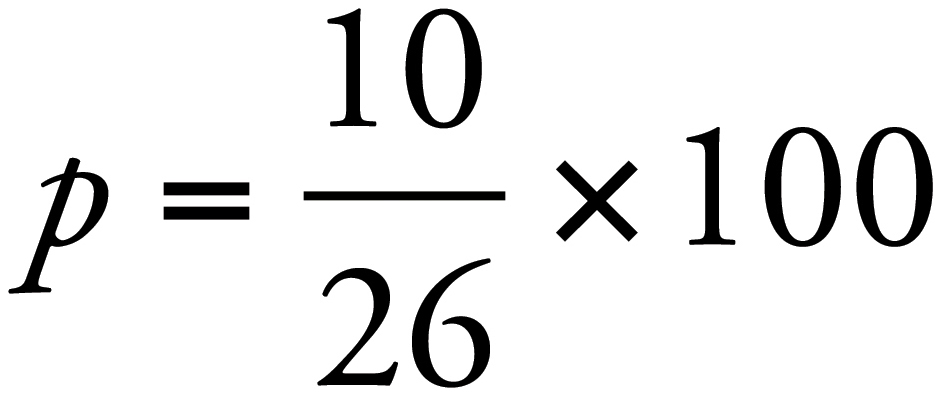 . Circle the target answer,
. Circle the target answer, 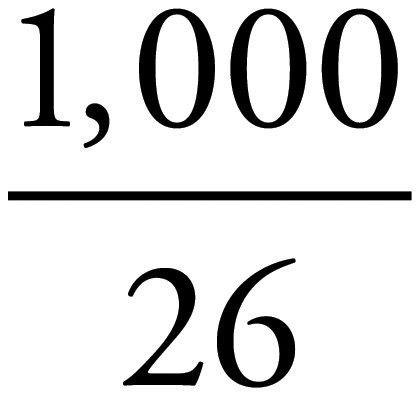 .
.
Now, plug b = 5, r = 2, and x = 80 in for each of the answer choices, looking for the choice that equals 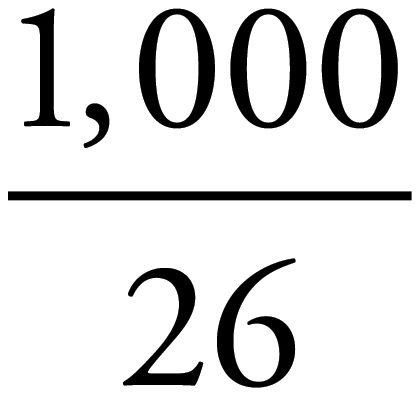 . Choice (A) is
. Choice (A) is  , which reduces to
, which reduces to 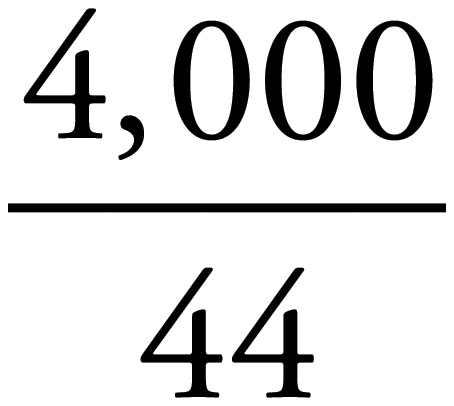 , or
, or 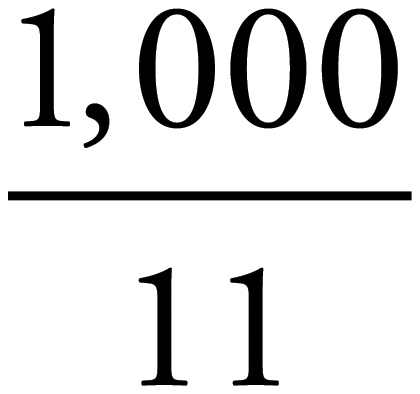 . Eliminate (A). Choice (B) is
. Eliminate (A). Choice (B) is  , which reduces to
, which reduces to  . Keep (B). Choice (C) is
. Keep (B). Choice (C) is  . Eliminate (C). Choice (D) is
. Eliminate (C). Choice (D) is  . Eliminate (D). Choice (E) is
. Eliminate (D). Choice (E) is  . Eliminate (E). The correct answer is (B).
. Eliminate (E). The correct answer is (B).
D
The answer choices represent the information directly asked for by the question, so Plug In the Answers. Begin with (C). If the new after-tax price of a car is $13,500, then the new pre-tax price is  , the old pre-tax price is $12,500 − $2,500 = $10,000, and the old after-tax price is $10,000 × 1.08 = $10,800. In this case, the cost of 18 cars at the old after-tax price is 18 × $10,800 = $194,400, and the cost of 15 cars at the new after-tax price is 15 × $13,500 = $202,500. Since these costs should be equal, eliminate (C).
, the old pre-tax price is $12,500 − $2,500 = $10,000, and the old after-tax price is $10,000 × 1.08 = $10,800. In this case, the cost of 18 cars at the old after-tax price is 18 × $10,800 = $194,400, and the cost of 15 cars at the new after-tax price is 15 × $13,500 = $202,500. Since these costs should be equal, eliminate (C).
When the new after-tax price of a car was $13,500, the cost of 15 cars at the new after-tax price was too great, and the cost of 18 cars at the old after-tax price was less than necessary. Two factors contributed to the unwanted gap between these values. First, fewer cars were purchased at the new price than at the old price. Nothing can be done about this, since the quantities purchased are built into the question. Second, the difference between the new pre-tax price and the old pre-tax price is $2,500. This difference was too great relative to a new after-tax price of $13,500. To lessen the impact of the $2,500 pre-tax price difference, therefore, increase the new after-tax price of per car. Try (D).
If the new after-tax price of a car is $16,200, then the new pre-tax price is  , the old pre-tax price is $15,000 − $2,500 = $12,500, and the old after-tax price is $12,500 × 1.08 = $13,500. In this case, the cost of 18 cars at the old after-tax price is 18 × $13,500 = $243,000, and the cost of 15 cars at the new after-tax price is 15 × $16,200 = $243,000. The correct answer is (D).
, the old pre-tax price is $15,000 − $2,500 = $12,500, and the old after-tax price is $12,500 × 1.08 = $13,500. In this case, the cost of 18 cars at the old after-tax price is 18 × $13,500 = $243,000, and the cost of 15 cars at the new after-tax price is 15 × $16,200 = $243,000. The correct answer is (D).
C
If James can complete the job in 6 hours, then James’ rate is  of a job per hour. If Sarah can complete the job in 4.5 hours, then Sarah’s rate is
of a job per hour. If Sarah can complete the job in 4.5 hours, then Sarah’s rate is 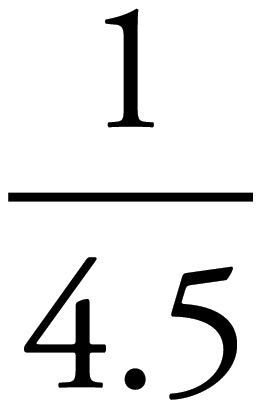 or
or  of a job per hour. Together, James and Sarah work at a rate of
of a job per hour. Together, James and Sarah work at a rate of 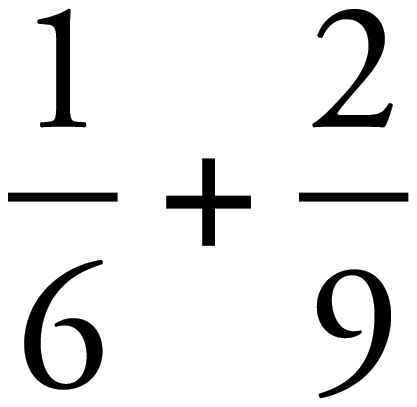 or
or 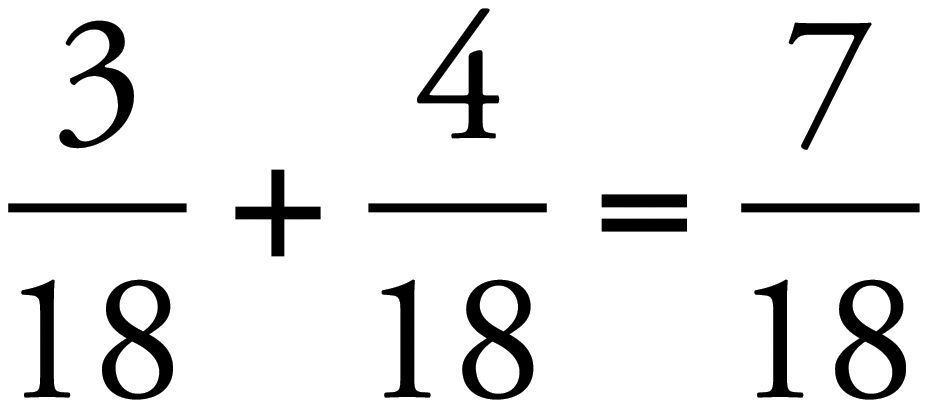 of a job per hour.
of a job per hour.
During the hour that James and Sarah work together, they complete 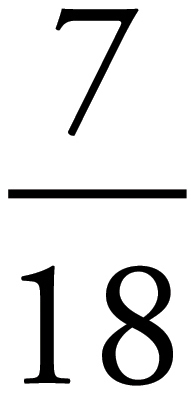 of the job, leaving
of the job, leaving 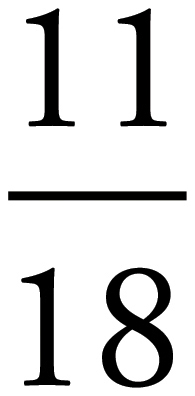 of the job unfinished. James will complete some of the unfinished work at a rate of
of the job unfinished. James will complete some of the unfinished work at a rate of  per hour, and Sarah will finish the rest at a rate of
per hour, and Sarah will finish the rest at a rate of  per hour, such that Sarah works by herself half as long as James does. Translate this information into an algebraic equation. If t represents the number of hours during which James works alone, then
per hour, such that Sarah works by herself half as long as James does. Translate this information into an algebraic equation. If t represents the number of hours during which James works alone, then  . Multiply both sides of the equation by 18 and simplify to find that 3t + 2t = 11. Simplify the equation further so that 5t = 11. Divide both sides of the equation by 5, so that t = 2.2 hours, or 2 hours and 12 minutes. The correct answer is (C).
. Multiply both sides of the equation by 18 and simplify to find that 3t + 2t = 11. Simplify the equation further so that 5t = 11. Divide both sides of the equation by 5, so that t = 2.2 hours, or 2 hours and 12 minutes. The correct answer is (C).
A
First, plug in the values from the question stem. Plug 2 in for y and 144 in for z to get that 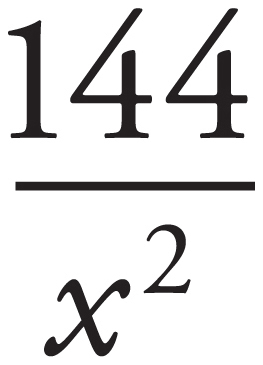 is an integer, while
is an integer, while  is not, which means that x2 divides evenly into 144, but x3 does not. To easily determine if a number divides evenly into another, find the prime factors. In this case, the prime factorization of 144 is 144 = 24 * 32. Now Plug In the Answers for the value of x and determine if
is not, which means that x2 divides evenly into 144, but x3 does not. To easily determine if a number divides evenly into another, find the prime factors. In this case, the prime factorization of 144 is 144 = 24 * 32. Now Plug In the Answers for the value of x and determine if  is an integer, while
is an integer, while  is not. Choice (A) is 2 and 22 and 23 are factors of 144. Because the question asks which answer choice is NOT a factor of 144, keep (A). Because the answer choices were used to determine the factors and there can be only one answer choice that works, there is no need to test other answer choices. In fact, if the remaining answer choices are all taken down to their prime factors and plugged in for x, they will all abide by the rules in the problem that
is not. Choice (A) is 2 and 22 and 23 are factors of 144. Because the question asks which answer choice is NOT a factor of 144, keep (A). Because the answer choices were used to determine the factors and there can be only one answer choice that works, there is no need to test other answer choices. In fact, if the remaining answer choices are all taken down to their prime factors and plugged in for x, they will all abide by the rules in the problem that  is an integer, while
is an integer, while  is not. The correct answer is (A).
is not. The correct answer is (A).
D
There are variables in the answer choices, so plug values in for g and b. Let g = 2 and b = 3. The question asks for the probability that at least one of two randomly selected players is a girl, which is equivalent to 1 minus the probability that both of the selected players are boys. The probability that the first player selected is a boy is  , and the probability that the second player selected is a boy is
, and the probability that the second player selected is a boy is  . Therefore, the probability that both selected players are boys is
. Therefore, the probability that both selected players are boys is 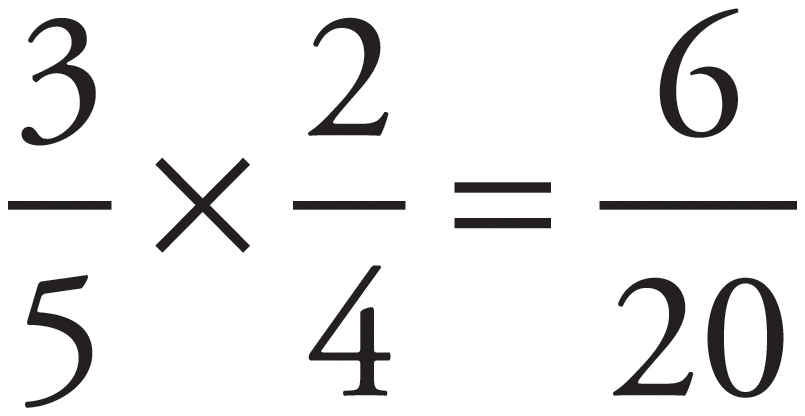 , and the probability that at least one of the players is a girl is
, and the probability that at least one of the players is a girl is  . Plug g = 2 and b = 3 into each of the answer choices, looking for the answer that equals
. Plug g = 2 and b = 3 into each of the answer choices, looking for the answer that equals 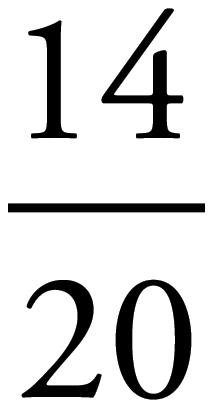 .
.
Choice (A) is  , so eliminate (A). Choice (B) is
, so eliminate (A). Choice (B) is  , so eliminate (B). Choice (C) is
, so eliminate (B). Choice (C) is  , so eliminate (C). Choice (D) is
, so eliminate (C). Choice (D) is  , so keep (D). Choice (E) is
, so keep (D). Choice (E) is  , so eliminate (E). The correct answer is (D).
, so eliminate (E). The correct answer is (D).
B
The answer choices represent the information directly asked for by the question, so Plug In the Answers. However, there is information in the question that should first be considered. Variables x and y represent the number of short and long essays available in Part Two of the test, respectively. The ratio of available long essays to short essays remains a constant in both parts of the test, and the ratio of short to long essays in Part One is 2:1. Therefore, the ratio of short to long essays in Part Two is 2:1, and the value of x must be twice the value of y. Eliminate (A) and (D), in which x is an odd number, because they entail non-integer values of y. Now, Plug In the Answers, beginning with (C).
If x = 8, then there are 8 short essays and 4 long essays available in Part Two, and 8 × 4 = 32 ways to select these essays. In this case, because there are 4 × 2 = 8 ways to select essays in Part One, there are 8 × 32 = 256 different lineups of essays a student can choose. This does not match the criterion in the question stem, which states that there are 144 different lineups. Since the number of essays in Part One is fixed, there must be fewer essays available in Part Two. Try (B).
If x = 6, then there are 6 short essays and 3 long essays available in Part Two, and 6 × 3 = 18 ways to select these essays. In this case, because there are 8 ways to select essays in Part One, there are 8 × 18 = 144 different lineups of essays a student can choose. This matches the criterion in the question stem, so the correct answer is (B).
A
The problem asks for the value of z, so begin manipulating the information in the question to work towards z. The sum of the angles in a triangle is 180º, so the equation of the smaller triangle that contains z is z + 85 + (x + 15) = 180. Simplify the equation to find that z + x + 100 = 180 and z + x = 80. Because the larger triangle contains a value of x, solve for x, so x = 80 – z. Now, write the equation for the larger triangle and solve the equation for x. The equation for the larger triangle is z + (2x – 5) + 65 = 180, which simplifies to z + 2x + 60 = 180 and z + 2x = 120. Solve for x, so 2x = 120 – z and 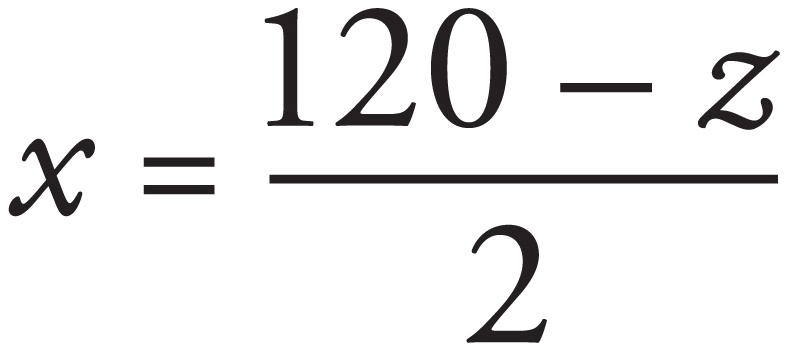 . Next, set the equations equal to each other, so
. Next, set the equations equal to each other, so  . Finally, solve for z, so 160 – 2z = 120 – z and 160 = 120 + z, so 40 = z. The correct answer is (A).
. Finally, solve for z, so 160 – 2z = 120 – z and 160 = 120 + z, so 40 = z. The correct answer is (A).
B
Begin by drawing the figure. Drawing the triangle with angles consistent with the information in the problem yields a scalene triangle. When solving for side lengths of unfamiliar triangles, always look for ways to create a more familiar shape. Recognize that the length of 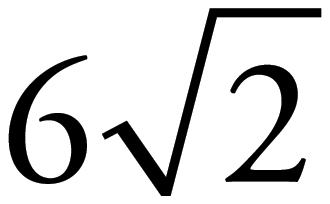 for SR indicates the possible presence of a 45°-45°-90° triangle. Draw lines vertically down from point S and horizontally left from point R. Label the new point Z for reference.
for SR indicates the possible presence of a 45°-45°-90° triangle. Draw lines vertically down from point S and horizontally left from point R. Label the new point Z for reference.
Solving for the measure of angle SRT yields 180 – 30 – 15 = 135°. Because the straight line created by the extension of the figure left from point R has to have a degree measure of 180°, the degree measure of angle ZRS is 180° – 135° = 45°. Because ∠SZT is 90°, triangle ZRS is a 45°-45°-90° triangle. The problem provides that angle RST is 15°, which means that angle ZST is 45° + 15° = 60°. Therefore, triangle ZST is a 30°-60°-90° triangle, with sides in a ratio of  . Because triangle ZSR is a 45°-45°-90° triangle, with sides in a ratio of
. Because triangle ZSR is a 45°-45°-90° triangle, with sides in a ratio of 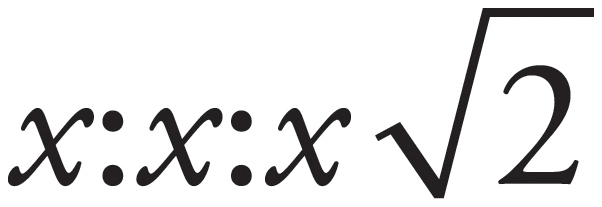 , and SR is
, and SR is 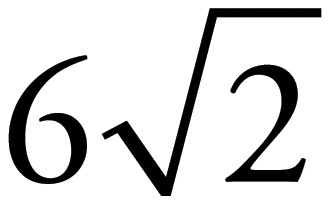 , SZ is 6. SZ relates to the x side of the 30°-60°-90° triangle, so ST, which relates to the 2x side of the 30°-60°-90° triangle, is 12. The correct answer is (B).
, SZ is 6. SZ relates to the x side of the 30°-60°-90° triangle, so ST, which relates to the 2x side of the 30°-60°-90° triangle, is 12. The correct answer is (B).
B
There are variables in the answer choices, so plug values in for h and k. The value of k must be twice the value of h, so let h = 2 and k = 4. Draw a circle with center (2, 4) that is tangent to the y-axis. Create a right triangle by drawing lines from the center of the circle to the y-axis and the origin, such that the vertices of the triangle lie at points (0, 0), (0, 4), and (2, 4). Use the Pythagorean Theorem, a2 + b2 = c2, to determine the length of the triangle’s hypotenuse, c. The shorter sides of the triangle are of lengths 2 and 4, so 22 + 42 = c2. Simplify the equation, so that c2 = 20. Take the positive square root of both sides of the equation, so that the distance from the origin to the center of the circle is 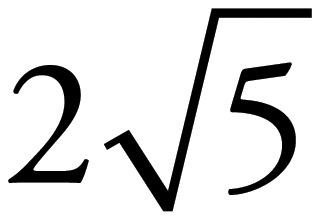 . Now, Plug k = 4 in for each of the answer choices, looking for the answer that equals
. Now, Plug k = 4 in for each of the answer choices, looking for the answer that equals  .
.
Choice (A) is  , so eliminate (A). Choice (B) is
, so eliminate (A). Choice (B) is  , so keep (B). Choice (C) is 4, so eliminate (C). Choice (D) is
, so keep (B). Choice (C) is 4, so eliminate (C). Choice (D) is  , so eliminate (D). Choice (E) is
, so eliminate (D). Choice (E) is  , so eliminate (E). The correct answer is (B).
, so eliminate (E). The correct answer is (B).
E
This is a value data sufficiency question, so begin by determining what is known and what is needed to answer the question. What is known is that Angela is twice as old as the sum of Bill’s and Charlie’s ages. This information can be expressed algebraically: let a be Angela’s age, b be Bill’s age, and c be Charlie’s age. Thus, a = 2(b + c). To solve this equation, what is needed are values for both a and b or two more distinct equations with all three variables.
Now, evaluate Statement (1). In four years, each of the people will have aged, so make sure to include this information in an algebraic equation: (a + 4) + (b + 4) +(c + 4) = 108. This equation simplifies into a + b + c = 96. This statement gives another equation with all 3 variables. However, there are still 3 variables and only 2 equations. This statement is therefore insufficient. Write down BCE.
Now, evaluate Statement (2). Remember that an average is calculated by adding the values and dividing by the number of values. Also, five years ago will affect each person’s age, so make sure this information is included in the algebraic expression:  , which simplifies to: a + b + c – 15 = 81 or a + b + c = 96. This statement gives an equation with all 3 variables. But, there are still 3 variables and only 2 equations. This statement is therefore insufficient. Eliminate (B).
, which simplifies to: a + b + c – 15 = 81 or a + b + c = 96. This statement gives an equation with all 3 variables. But, there are still 3 variables and only 2 equations. This statement is therefore insufficient. Eliminate (B).
Finally, evaluate the two statements combined. The rules for simultaneous equations require that each of the three equations be distinct. Since the equation for Statement (1) is identical to that of Statement (2), the combination of the two statements still only gives 2 equations and 3 variables. The two statements together are therefore insufficient. The correct answer is (E).
C
This is a Yes/No Data Sufficiency question. However, there is information in the question stem that should be considered, so use the Pieces of the Puzzle approach to assess the question. The question asks whether the area of triangle ABD is equal to the area of triangle BCD. Since the two triangles share a common height, BD, their areas will be equal only if their bases, AD and DC, are the same length. Therefore, in order to answer the question, the statements must provide information sufficient to determine whether AD = DC. The task of a Yes/No Data Sufficiency question is to determine whether the information in the statements produces a consistent “Yes” or “No” answer to the question. Evaluate the statements one at a time.
Evaluate Statement (1). The length of AD is 2. However, Statement (1) does not provide the length of DC, so it is insufficient to determine whether AD = DC. Write down BCE.
Now, evaluate Statement (2). The length of BD is 5. However, Statement (2) does not provide the lengths of AD and DC, so it is insufficient to determine whether AD = DC. Eliminate (B).
Now, evaluate both statements together. Recognize that triangles ABD and BCD together form a larger triangle, triangle ABC. The Inscribed Angle Theorem dictates that angle ABC must be 90°, so triangle ABC is a right triangle, and (AB)2 + (BC)2 = (AC)2. From Statement (1), AD = 2. Therefore, AC = DC + 2. Substitute this value of AC into the equation above, so that (AB)2 + (BC)2 = (DC + 2)2. If the values of (AB)2 and (BC)2 can be determined, then the length of DC can be determined. Determine the value of (AB)2. If AD = 2 and BD = 5, then 22 + 52 = (AB)2. Simplify the equation, so that (AB)2 = 29. Substitute this value of (AB)2 into the equation above, so that 29 + (BC)2 = (DC + 2)2. Now, determine the value of (BC)2. If BD = 5, then (DC)2 + 52 = (BC)2. Simplify the equation, so that (BC)2 = (DC)2 + 25. Substitute this value of (BC)2 into the equation above, so that 29 + (DC)2 + 25 = (DC + 2)2. Simplify the equation, so that (DC)2 + 54 = (DC)2 + 4(DC) + 4. Combine like terms, so that 50 = 4(DC). Divide both sides of the equation by 4, so that (DC) = 12.5. Since (DC) ≠ (AD), the areas of triangles ABD and BCD are not the same, and the answer is “No.” Together, both statements are sufficient to answer the question, so eliminate (E). The correct answer is (C).
A
This is a Yes/No Data Sufficiency question, so be prepared to Plug In more than once. Because both sides of the inequality involved cube roots, take the cube of both sides to remove the cube roots and simplify even further. Therefore, the inequality is 8a < a + b. Subtract a from both sides to find that 7a < b. Now that the inequality has been simplified as far as possible, evaluate the statements individually. For Statement (1), if it is true that 7a < b, then the inequality in the question stem is always true, and the answer to the question is “Yes.” Write down AD.
For Statement (2), begin by manipulating the statement to produce 6a < b. Plug in values for a and b that satisfy that statement. If a = 1 and b = 7, then the statement is satisfied because 6 < 7. In this case, the inequality from the question stem, 7a < b, is not true because 7 = 7, so the answer is “No.” Plug In again to see if there is a way to produce a “Yes” answer to the question. If a = 1 and b = 8, then the statement is satisfied and the inequality in the question stem is now true because 7 < 8. Now the answer to the question is “Yes.” Because the statement produces two different answers to the question, the statement is insufficient. Eliminate (D). The correct answer is (A).
D
The sentence as written contains a parallel construction error in the list buying…providing…join, so eliminate (A) and any obvious repeaters. Choice (B) adds the word to before join, but commits the same error as (A), so eliminate (B). Consider the remaining choices. Choice (C) alters the meaning of the original sentence by stating that the parents will [have] climbing gear bought, so eliminate (C). Choice (D) fixes the parallel construction error and creates no new errors, so keep (D). Choice (E) contains a parallel construction error in the list having bought…provided…allowed, so eliminate (E). The correct answer is (D).
D
The sentence as written contains an invalid comparison between Edgar Allen Poe and Homer’s…poetry. Eliminate (A) and any obvious repeaters. Choices (B) and (E) repeat the invalid comparison and may be eliminated. Consider the remaining choices. Choice (C) creates the phrase, Unlike Edgar Allen Poe…in the example of Homer, which incorrect compares Edgar Allen Poe to the example of Homer, so eliminate (C). Choice (D) fixes the invalid comparison by comparing Edgar Allen Poe to Homer and makes no new errors. The correct answer is (D).
A
The task of the question is to weaken the objection, which means to provide a reason that the proposed tax plan might work despite the objection. The objection is that such tax savings tend to be kept as profit rather than reinvested. This objection is significant, because if the savings are not reinvested, there will be no job creation or corporate investment as a result of the savings. Thus, the correct answer needs to change something about what happens to the tax savings. Choice (A) indicates that the savings are required to be reinvested, which addresses the objection. Keep (A). Choice (B) is out of scope, as it discusses personal investments, so eliminate (B). Choice (C) is reversal—it strengthens the objection, so eliminate (C). Choice (D) is out of scope. It provides a mechanism by which the lower tax rate may not significantly hurt overall government revenue, which is irrelevant to whether the tax plan will produce job creation or corporate investment, so eliminate (D). Choice (E) is out of scope, as it discusses reasons for economic issues that cannot be directly tied to a reason that tax savings would be used to create jobs, so eliminate (E). The correct answer is (A).
C
Treat the passage as a series of facts and consider whether each answer choice can be proven. Choice (A) is out of scope. Proximity to the strongest warm ocean currents may not mean that any warm ocean currents impact that portion of coastline directly. Eliminate (A). Choice (B) is extreme language, as the other factors of glacial ablation may lead to high rates of ablation without warm ocean currents, so eliminate (B). Choice (C) matches the information in the passage. If a rise in ocean temperatures leads to a rise in warm ocean currents along glacial coasts, those currents will cause a rise in submarine melt rates. Thus, submarine melt rates are higher in the presence of warm ocean currents than they are in the absence of warm ocean currents. Keep (C). Choice (D) is extreme. While global climactic shifts may increase the occurrence of submarine melt rates, submarine melt may still have been an important factor in prior periods, so eliminate (D). Choice (E) is extreme language. Lower ocean temperatures may lead to a reduction in submarine melt rates, but that doesn’t prove that snow accumulation will be a more significant factor. Eliminate (E). The correct answer is (C).
B
This is a weaken question, so find the conclusion, premise, and any assumptions in the argument. The conclusion of the argument is that merely sharing the same physical space with another dog is sufficient to maintain proper socialization in dogs as they grow older. The premise for the conclusion comes from the last sentence, which cites evidence from a study demonstrating that the more often a dog shares a physical space with another dog, the better their socialization. A study shows that the more often a dog shares a physical space, the better their socialization is, so sharing a physical space is sufficient for maintaining proper socialization. This argument exhibits a causal reasoning pattern, in effect stating that shared physical space causes socialization in dogs. The standard assumption for causality is that there is no other cause, and it is not a coincidence. To weaken an argument based on the causality pattern, the correct answer will usually either provide an alternate cause or present a situation where the supposed cause (shared physical space) is present but the supposed effect (socialization) did not occur. It is also possible that the answer may indicate that the supposed cause and effect have been reversed. Here, that would mean that the answer could indicate that shared physical space is a result of socialization rather than socialization being the result of shared physical space. Evaluate the answer choices one at a time.
Choice (A) is out of scope because challenging a dog’s physical and mental capacities and avoiding these capacities deteriorating is not the focus of the argument. Eliminate (A). Choice (B) indicates that the causality may have been reversed. In effect, well-socialized dogs often share physical space with other dogs while poorly socialized dogs (for example, dogs that are aggressive toward other dogs) do not. Keep (B). Choice (C) is out of scope because dogs that are capable of both play and sharing space are not the focus of the passage. Eliminate (C). Choice (D) is out of scope. A study that analyzes other studies is just as valid as a study that collects its own data. Eliminate (D). Choice (E) casts doubt on the validity of the metrics used for measuring socialization, but this is out of scope. Eliminate (E). The correct answer is (B).
 . Statement (1) is insufficient.
. Statement (1) is insufficient. , which can be used to solve for x. If the value of x is known, then the question can be answered. Statement (1) is sufficient.
, which can be used to solve for x. If the value of x is known, then the question can be answered. Statement (1) is sufficient.





























































































































































